
- Travel Photography and Videography

Mastering Cinematic Travel Videography: 15 Tips to Create Stunning Travel Videos
- 10 minute read
- August 8, 2023
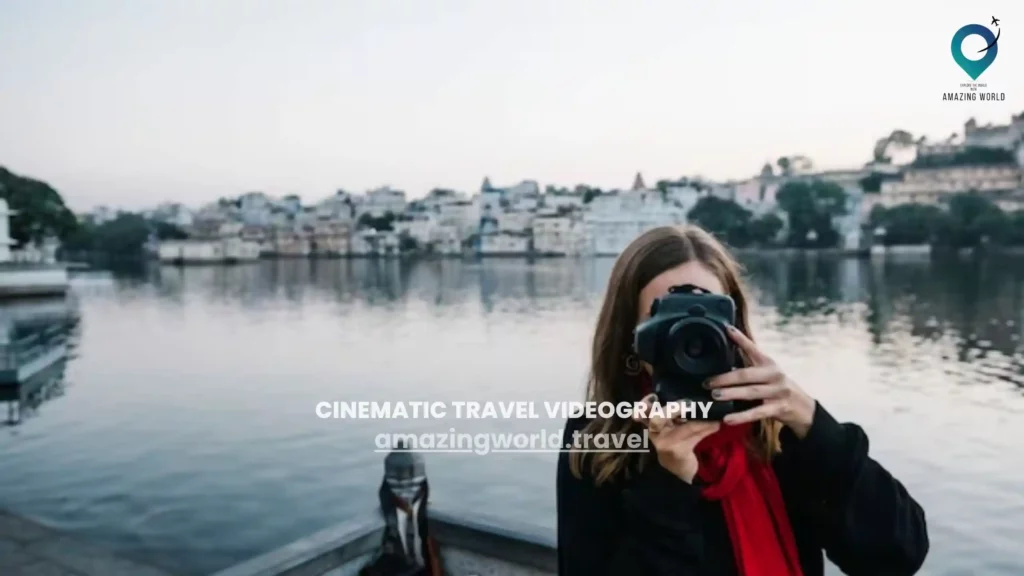
Welcome to the captivating realm of cinematic travel videography, where each frame transforms into a window to the world’s most breathtaking destinations. Whether you’re an aspiring filmmaker or an adventurous traveler with a camera in hand, this comprehensive guide is your passport to creating mesmerizing travel videos that capture the essence of your journeys.

In this digital era, travel videos have become more than mere documentation – they’re immersive experiences that transport viewers across continents, cultures, and emotions. From the warm embrace of the golden hour to the dynamic movement of camera shots, each element plays a pivotal role in painting an evocative tapestry of your adventures. Embark on this journey with us as we delve into the intricacies of planning narratives, harnessing natural light, and mastering camera techniques.
In the pages ahead, we’ll uncover the art of composition that transforms mundane scenes into cinematic masterpieces. We’ll explore the symphony of colors and sounds that breathe life into your videos, adding depth and emotion to every frame. Whether you’re capturing the vivacity of bustling markets or the serene tranquility of hidden landscapes, we’ll guide you through each step to ensure your travel videos resonate with audiences around the world.
- Choosing Amazing Places
The choice of locations forms the foundation of your cinematic travel videos. Look for places that are visually striking and narratively intriguing. These are the places that will engage your audience and make your videos stand out.
- Stunning Views: Seek destinations with awe-inspiring landscapes, architecture, and natural beauty.
- Narrative Richness: Opt for locations with historical, cultural, or personal significance. Places that tell stories on their own.
- Planning Your Story
Creating a cinematic travel video is more than just capturing beautiful visuals; it’s about telling a compelling story. Think of your video as a journey with a beginning, middle, and end. To craft a captivating narrative:
- Structured Approach: Plan your video’s storyline like a roadmap. Outline the sequence of events and shots you want to include. This provides a clear direction for your filming and editing process.
- Emotional Arc: Consider the emotional journey you want your viewers to experience. Will your video evoke excitement, nostalgia, or introspection? Map out how emotions will evolve throughout the video.
- Key Moments: Identify pivotal moments that resonate with your overall story. Whether it’s a breathtaking view, a local interaction, or a cultural experience, these moments will be the pillars of your video’s narrative.
3. Planning Your Story
Crafting a compelling narrative is at the heart of cinematic travel videography. Your travel video is more than a collection of scenes; it’s a story that should engage your audience from start to finish. Here’s how to plan your story effectively:
- Structured Approach: Treat your video like a story with a beginning, middle, and end. Create a storyboard that outlines the sequence of shots and scenes you want to include.
- Emotional Arc: Consider the emotions you want to evoke in your viewers. Think about how you can build up emotions throughout your video to create a captivating journey.
- Key Moments: Identify the highlights of your travel that are essential to your story. These moments should capture the essence of your experience and contribute to the overall narrative.
- Using Natural Light
Natural light is a cinematographer’s best friend, and it can make your travel videos truly cinematic. Here’s how to harness the power of natural light for stunning visuals:
- Golden Hour and Blue Hour: These are the periods just after sunrise and before sunset when the quality of light is magical. The golden hour bathes scenes in warm, soft light, while the blue hour adds a serene, ethereal ambiance.
- Setting the Mood: Use the specific qualities of light during these hours to match the mood of your scenes. Golden hour light can evoke warmth and intimacy, while blue hour light can create a dreamy and contemplative atmosphere.
- Camera Skills Made Simple
Creating cinematic travel videos doesn’t require you to be a professional filmmaker. Here’s how to master camera skills that add cinematic flair to your footage:
Basic Movements: Begin by practicing fundamental camera movements that can instantly enhance the quality of your shots:
- Panning: Slowly move your camera horizontally from one side to another. This is great for capturing sweeping landscapes or revealing scenes.
- Tilting: Rotate your camera vertically, moving it up or down. Tilting is useful for emphasizing tall structures or capturing dramatic skies.
- Tracking: Follow a subject’s movement by moving your camera smoothly alongside it. Tracking shots add dynamism and immersion to your videos.
Stabilizers: Achieving steady shots is essential for a professional look, especially while on the move:
- Gimbals: Invest in a handheld gimbal or stabilizer. These devices counteract any shaky movements, resulting in smooth and cinematic footage.
- Steady Hands: If you’re shooting without a stabilizer, practice holding your camera steadily and walking smoothly to avoid jerky motions.
- Making Pictures Look Great
Composition is a powerful tool for creating visually captivating shots. Mastering composition techniques can significantly enhance the cinematic quality of your travel videos:
Rule of Thirds: Utilize the rule of thirds to create balanced and visually engaging compositions:
- Imagine your frame divided into a 3×3 grid with two horizontal lines and two vertical lines.
- Place your subject or important elements along these lines or at their intersections.
- This technique adds visual interest and guides the viewer’s eyes to key elements in the frame.
Leading Lines: Incorporate leading lines to draw the viewer’s gaze and create depth:
- Look for natural or architectural lines within your scene, like roads, rivers, or fences.
- These lines guide the viewer’s eyes into the frame, adding a sense of movement and perspective.
Foreground and Background: Play with foreground and background elements to add depth:
- Place objects or elements in the foreground to frame your main subject and create layers within the shot.
- This technique adds dimension and makes your shots more visually engaging.
- Colors That Feel Right
Colors have a profound impact on the emotional tone of your videos. Understanding color psychology and applying color grading techniques can elevate your cinematic travel videos:
Color Psychology: Different colors evoke specific emotions and moods:
- Warm Colors (Red, Orange, Yellow): Convey energy, warmth, and excitement. Use them for vibrant scenes and moments of action.
- Cool Colors (Blue, Green, Purple): Evoke calmness, serenity, and reflection. They are well-suited for tranquil and contemplative scenes.
Color Grading: During the editing process, use color grading tools to achieve a cohesive and cinematic color palette:
- Adjust colors to match the mood of each scene. Enhance warm tones for joyful moments and cool tones for introspective scenes.
- Consistent color grading unifies the visual style of your video, making it feel like a cohesive cinematic experience.
8. Getting Extra Shots
Capturing the details adds depth and authenticity to your cinematic travel videos. Consider these techniques to create a richer visual experience:
Texture and Close-ups: Zoom in on textures, patterns, and small details that define the essence of a place:
- Capture close-up shots of textured walls, vibrant textiles, local crafts, and unique architectural features.
- These shots offer a tactile and immersive perspective, allowing viewers to appreciate the finer aspects of your surroundings.
Contextual Shots: Incorporate scenes that provide context to your location and convey a sense of local life:
- Film scenes of bustling markets, people going about their daily routines, or street vendors interacting with customers.
- Contextual shots establish the setting, culture, and atmosphere, making your video more immersive and engaging.
9. Sounds That Capture Moments
Sound plays a crucial role in creating a multisensory cinematic experience. Here’s how to use sound to enhance the immersion of your travel videos:
Ambient Sounds: Capture the sounds that define each location, bringing your audience closer to the environment:
- Record ambient sounds like the chirping of birds, the rustling of leaves, the chatter of a crowded square, or the waves crashing on the shore.
- These sounds transport viewers to the scene, making them feel as if they are right there with you.
Music Selection: Choose music that complements the mood of your video and enhances its emotional impact:
- Select tracks that resonate with the overall tone of your video, whether it’s uplifting, reflective, or adventurous.
- The right music creates a powerful synergy with the visuals, amplifying the emotions you want to convey.
10. Making Scenes Flow
Seamless transitions are essential for maintaining the rhythm and coherence of your cinematic travel video. Here’s how to ensure smooth transitions between scenes:
Transition Techniques: Experiment with various transition effects to keep the viewer engaged and create a natural progression:
- Cut: An instantaneous switch from one scene to another. Use cuts for quick shifts in time or location.
- Fade: A gradual transition where one scene fades out as the next fades in. Fades create a soft and subtle change.
- Dissolve: Both scenes overlap briefly, creating a smooth transition. Dissolves work well for sequences that flow seamlessly.
Logical Progression: Ensure that your transitions make sense within the context of your story and maintain a logical flow:
- Transitions should connect scenes that share thematic, visual, or narrative elements, ensuring a smooth and coherent viewing experience.
11. Slow and Fast Moments
Adding variations in time can infuse your cinematic travel videos with a captivating dynamic. Here’s how to master slow-motion and time-lapse techniques:
Slow Motion: Utilize slow-motion shots to highlight details and evoke emotions in your travel videos:
- Slow-motion footage emphasizes specific actions, expressions, or movements, making them more impactful.
- Use slow motion for sequences like a splash of water, a smile, or a sunrise, creating a sense of wonder and appreciation.
Time-Lapse: Create time-lapse sequences to showcase changes over time and capture the essence of a location:
- Record scenes at a slower frame rate than usual and then play them back at normal speed. This compresses time and captures transformations like shifting clouds, changing light, or bustling crowds.
- Time-lapses reveal the passage of time in a visually compelling way, adding depth to your narrative.
12. Focus on Close and Far
Mastering the focus of your shots adds a cinematic touch by directing the viewer’s attention. Here’s how to play with focus effectively:
Depth of Field: Control depth of field to draw attention to specific elements and create visual interest:
- Use a wide aperture (small f-number) to achieve a shallow depth of field. This blurs the background while keeping your subject sharp and prominent.
- Shallow depth of field isolates your subject, making it stand out from the surroundings and adding an artistic dimension to your shots.
Visual Hierarchy: Guide the viewer’s gaze by using focus to establish visual hierarchy:
- Place your main subject in sharp focus while allowing the background or other elements to remain slightly blurred.
- This technique directs attention where you want it, enhancing the narrative impact of your shots.
13. Moving Camera Tricks
Incorporating camera movement can bring energy and dynamism to your cinematic travel videos. Here’s how to use moving camera techniques effectively:
Walking Shots: Add movement to your shots by filming while walking, creating a sense of exploration and immersion:
- Walking shots allow you to capture scenes from a traveler’s perspective, making viewers feel as if they’re part of the journey.
- Use walking shots to introduce a location, showcase surroundings, or provide context to your narrative.
Stabilizers: Implement stabilizers or gimbals for smooth camera movement, even when you’re on the move:
- Stabilizers counteract unwanted vibrations and shakes, ensuring your shots remain steady and professional-looking.
- Smooth camera movement enhances the cinematic quality of your videos and adds a polished touch.
14. Editing Like a Pro
The editing process is where your cinematic travel video truly comes to life. Here’s how to refine your footage into a coherent and compelling story:
Story Flow: Organize your shots in a logical sequence that follows the narrative arc of your video:
- Start with an attention-grabbing opening that sets the tone and hooks viewers’ interest.
- Arrange shots in a way that maintains a smooth and engaging flow, leading viewers through the journey of your travel experience.
Color Correction: Enhance the visual consistency of your shots by applying color correction:
- Adjust color balance, exposure, and contrast to create a uniform look across different scenes.
- Color correction ensures that your video maintains a professional and polished appearance.
Color Grading: Use color grading to establish a specific cinematic atmosphere that suits your video’s mood:
- Apply color grading presets or make manual adjustments to achieve the desired color palette.
- Color grading enhances the overall visual impact of your video and contributes to its cinematic feel.
15. Telling an Exciting Tale
Bringing all elements together, you’re ready to craft a compelling travel narrative that captivates your audience:
Strong Beginning: Begin with a powerful opening shot or sequence that grabs viewers’ attention and sets the tone for the rest of the video:
- Hook your audience with an intriguing visual or a captivating moment that sparks curiosity.
Effective Storytelling: Use your planned shots to create a coherent and emotionally engaging journey:
- Introduce key moments, showcase unique experiences, and convey the essence of each location you visited.
- Build a narrative arc that keeps viewers invested in the unfolding story.
Memorable Conclusion: Wrap up your video with impact, leaving a lasting impression on your audience:
- End with a shot that encapsulates the essence of your journey or delivers a powerful message.
- The conclusion should resonate with viewers and reinforce the cinematic quality of your travel video.
Conclusion .
As you venture into the realm of cinematic travel videography, remember that this journey encompasses both your creative vision and technical expertise. While the process may appear intricate, every step you take contributes to the creation of videos that transport your viewers to the heart of your travels. Embrace patience as you experiment, learn, and refine your skills, understanding that achieving cinematic quality requires time and dedication.
Dive into the realm of experimentation by exploring different angles and perspectives. Seize the opportunity to capture genuine emotions that define your journey—a breathtaking vista, a heartwarming interaction, or a peaceful moment of reflection. Each destination carries its own unique story, so strive to narrate its distinctiveness and charm through your lens.
Striking a balance between mastering cinematic techniques and embracing the authenticity of your adventure is paramount. Allow the technical aspects to enhance your story without overshadowing the essence of your travel experiences. Embrace a stance of continuous learning, staying attuned to new equipment, software, and trends to ensure your videos remain fresh and engaging.
How much did you like Our detailed Mastering Cinematic Travel Videography: 15 Tips to Create Stunning Travel Videos ? Review Also, please share these Blogs with your friends on social media.
Related Article –
- Road Trips Ideas | 12 Tips to Prepare Your Car for a Long Road Trip?
- 150 Best Places to Visit in the United States In 2023
- Road Trip With Kids
- How to Stay Awake While Driving Long Distances
- Audiobooks to Listen to On Your Road Trip
- How to Create an Epic Itinerary Road Trip
- Best Rental Cars For Travel Adventures
Cinematic Travel Videography FAQs
what equipment do i need to create cinematic travel videos.
To get started, you’ll need a camera (preferably a DSLR or mirrorless camera), a variety of lenses, a stabilizer or gimbal for smooth shots, a tripod for stability, and a quality microphone for capturing clear audio. Additionally, investing in video editing software will be essential for post-production.
How do I choose the right music for my travel video?
Selecting the right music is crucial for setting the mood of your video. Look for music that complements the emotions and pace of your scenes. There are various royalty-free music libraries available online, offering a wide range of genres and styles to suit different atmospheres.
What’s the best way to capture audio while filming on location?
Using an external microphone, such as a shotgun microphone or a lavalier mic, can significantly improve audio quality. These mics can be attached to your camera or the subject you’re filming to capture clear and crisp sound even in noisy environments.
How can I effectively tell a story in my travel video?
Crafting a compelling narrative involves planning your shots to create a beginning, middle, and end. Identify key moments that encapsulate the essence of your journey and structure your video around them. Introduce your destination, share experiences, and conclude with a memorable closing shot.
How do I achieve the cinematic look during editing?
Color correction and grading play a vital role in achieving a cinematic look. Adjust the colors to enhance the mood of each scene and create a consistent visual palette. You can also experiment with adding a slight filmic grain or adjusting contrast to emulate the cinematic feel.
What are some common mistakes to avoid in cinematic travel videography?
Avoid excessive camera movement, overuse of transitions, and shaky footage. Additionally, be mindful of overediting or using too many effects that may distract from the story. Always prioritize the narrative and viewer engagement.
Can I shoot cinematic travel videos with a smartphone?
Yes , smartphones equipped with good camera capabilities can be used to create cinematic travel videos. However, using additional smartphone-compatible accessories like stabilizers, external microphones, and lenses can enhance the quality of your footage.
How can I make my videos stand out from others?
Inject your personal style and unique perspective into your videos. Look for creative angles, experiment with different techniques, and add your own creative touches to your shots. This will help your videos stand out and resonate with your audience.
How long should my cinematic travel video be?
The ideal length of your video depends on the platform you’re uploading it to and the attention span of your audience. Aim for a duration that keeps viewers engaged and tells a compelling story without feeling rushed. Generally, keeping it between 3 to 5 minutes is a good guideline.
How can I improve my videography skills over time?
Continuous learning and practice are key. Study the work of experienced videographers, take online courses, experiment with different techniques, and gather feedback from peers. As you gain experience, your skills will naturally evolve and improve.

Meet David Hoper, a passionate travel Blog writer with 7+ years of experience in travel content. Through his exemplary storytelling and engaging narratives, he shares his experiences and brings destinations to life. With a keen eye for detail and a love for exploration, he has cultivated a diverse portfolio of travel blogs that inspire and inform readers worldwide.
In this article:

Post written by: David Hoper
Leave a reply.
Your email address will not be published. Required fields are marked *
Save my name, email, and website in this browser for the next time I comment.
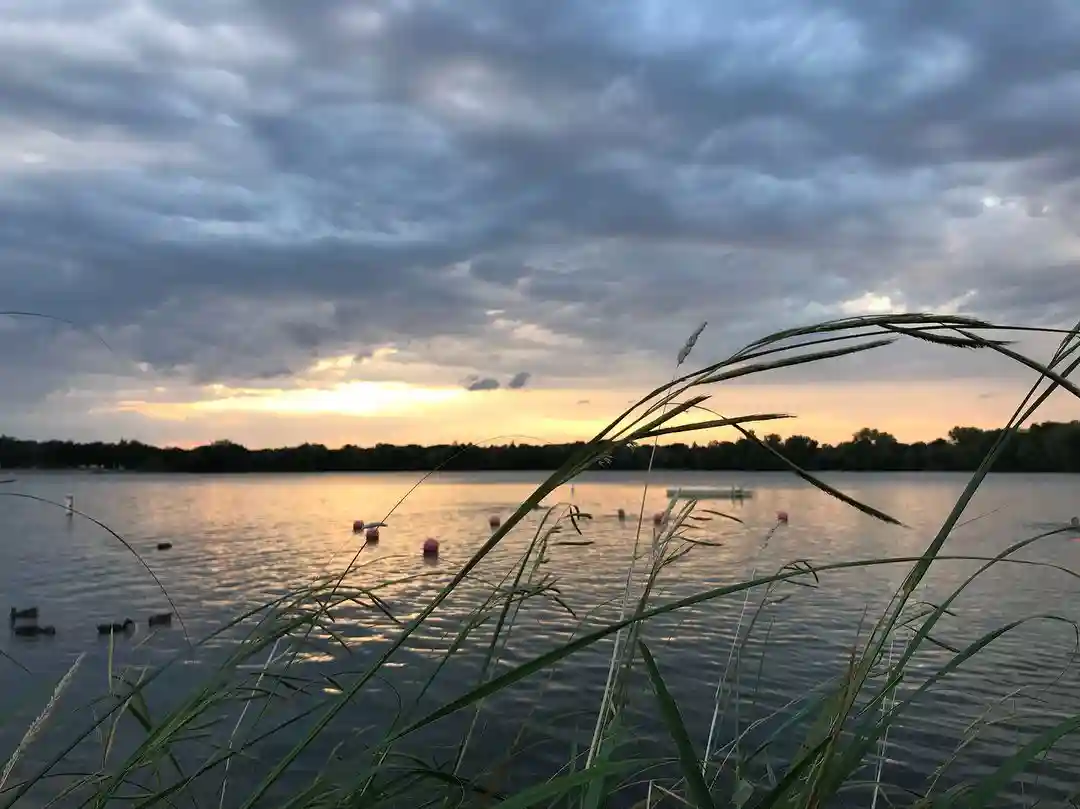
United states Discover the Hidden Gem: Lake Nokomis Beach in Minneapolis, MN
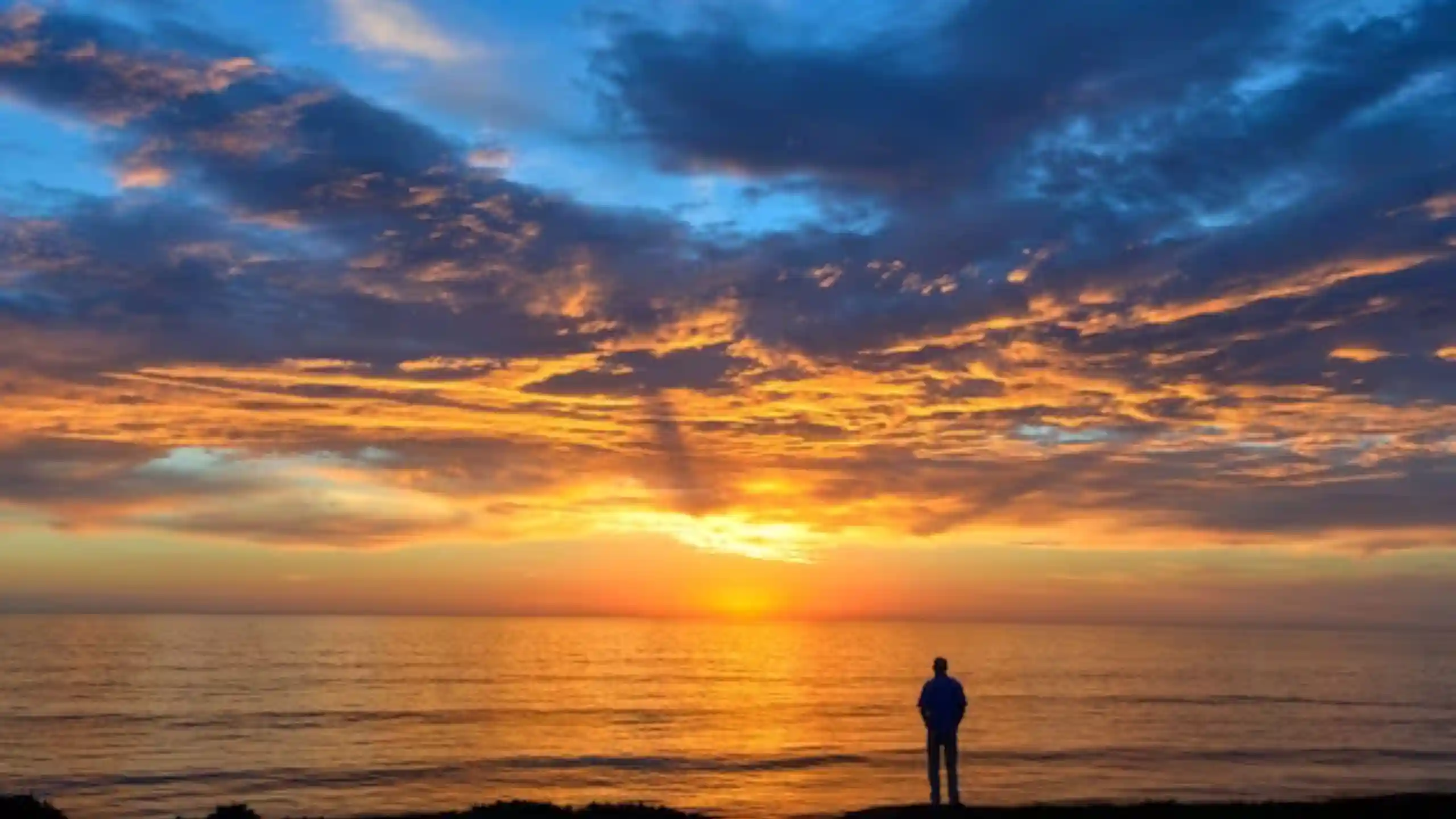
- August 9, 2023
Travel Photography and Videography Sunset Photography: Expert Tips for Capturing Evening Sunset Shots
You may also like.

Mastering Travel Photography: 20 Professional Tips for Stunning Shots
- 16 minute read
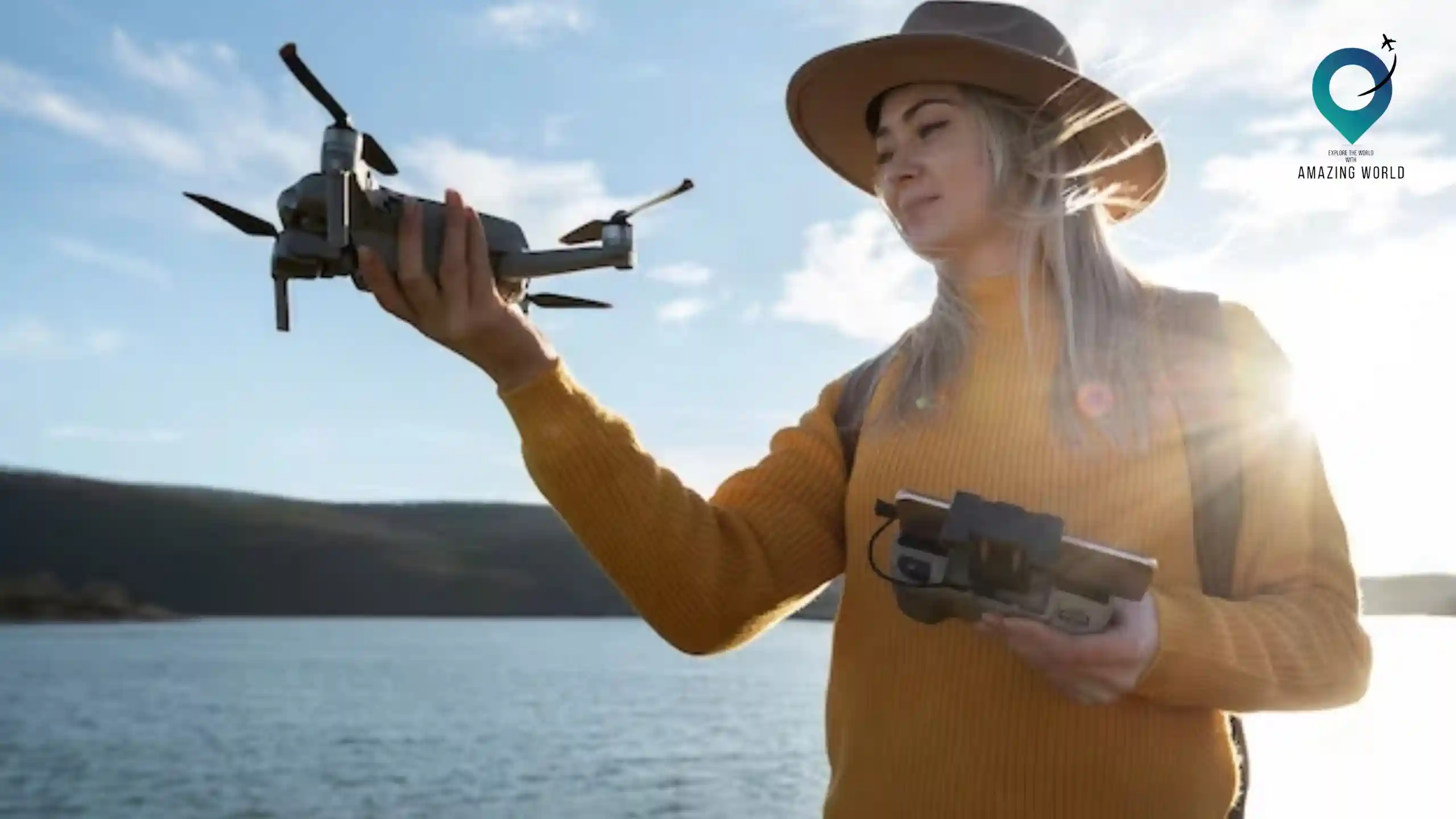
The Impact of Drones on Travel Photography and Videography
- 8 minute read
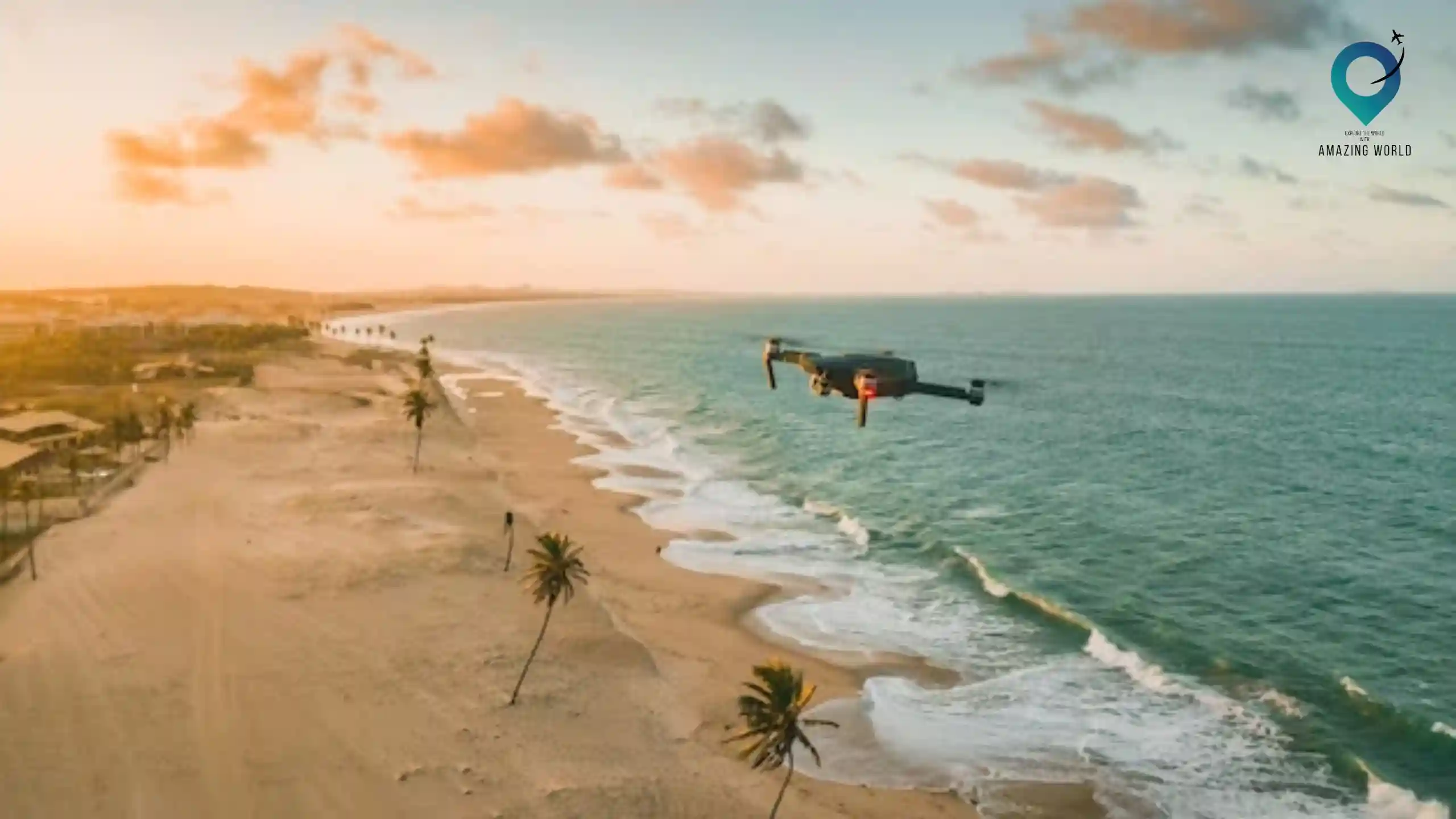
Exploring the World from Above Aerial Adventures with Drones

Sunset Photography: Expert Tips for Capturing Evening Sunset Shots
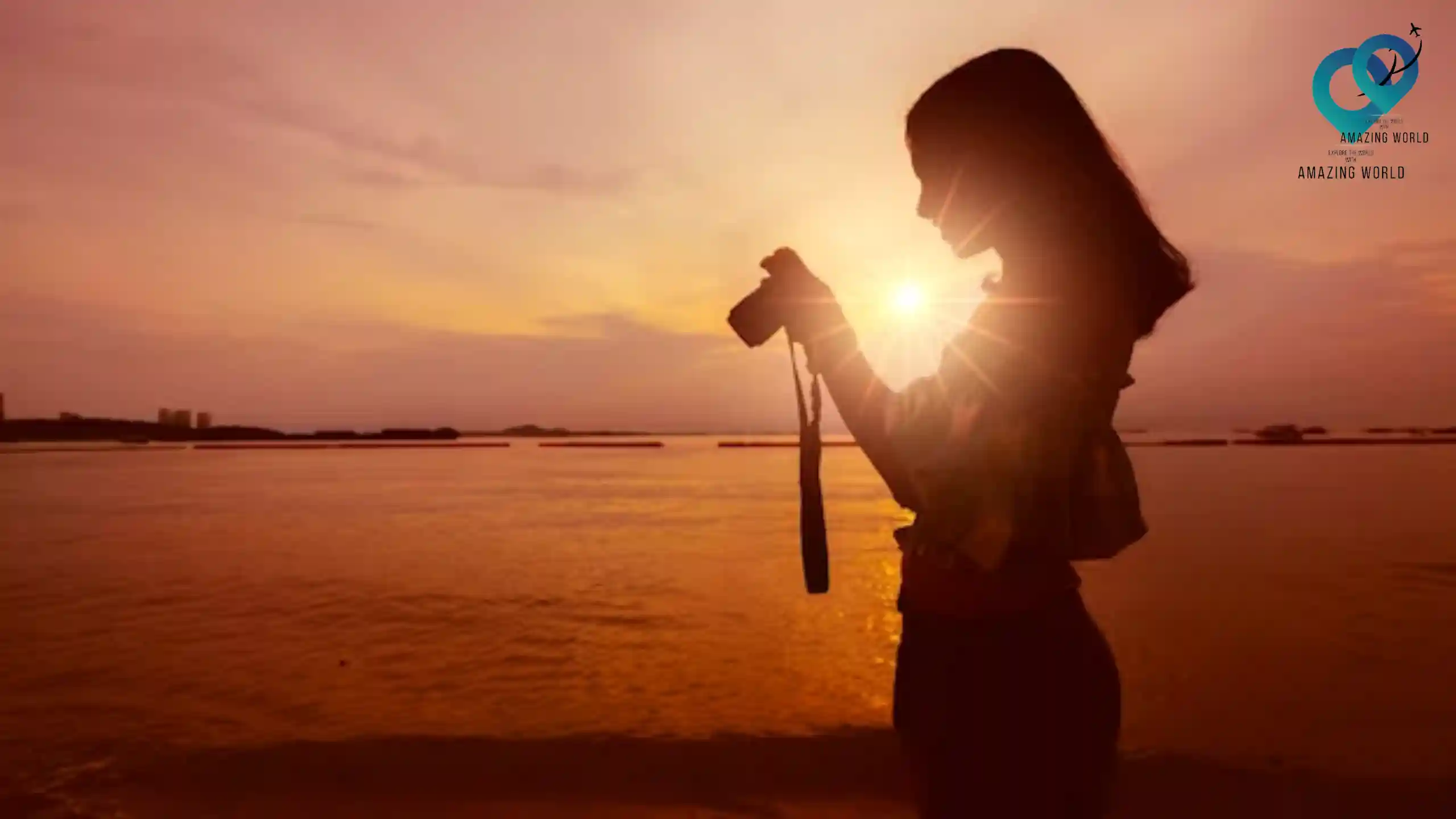
Mastering Sunrise Photography: Proven Techniques for Stunning Morning Sunrise Shots
- 7 minute read
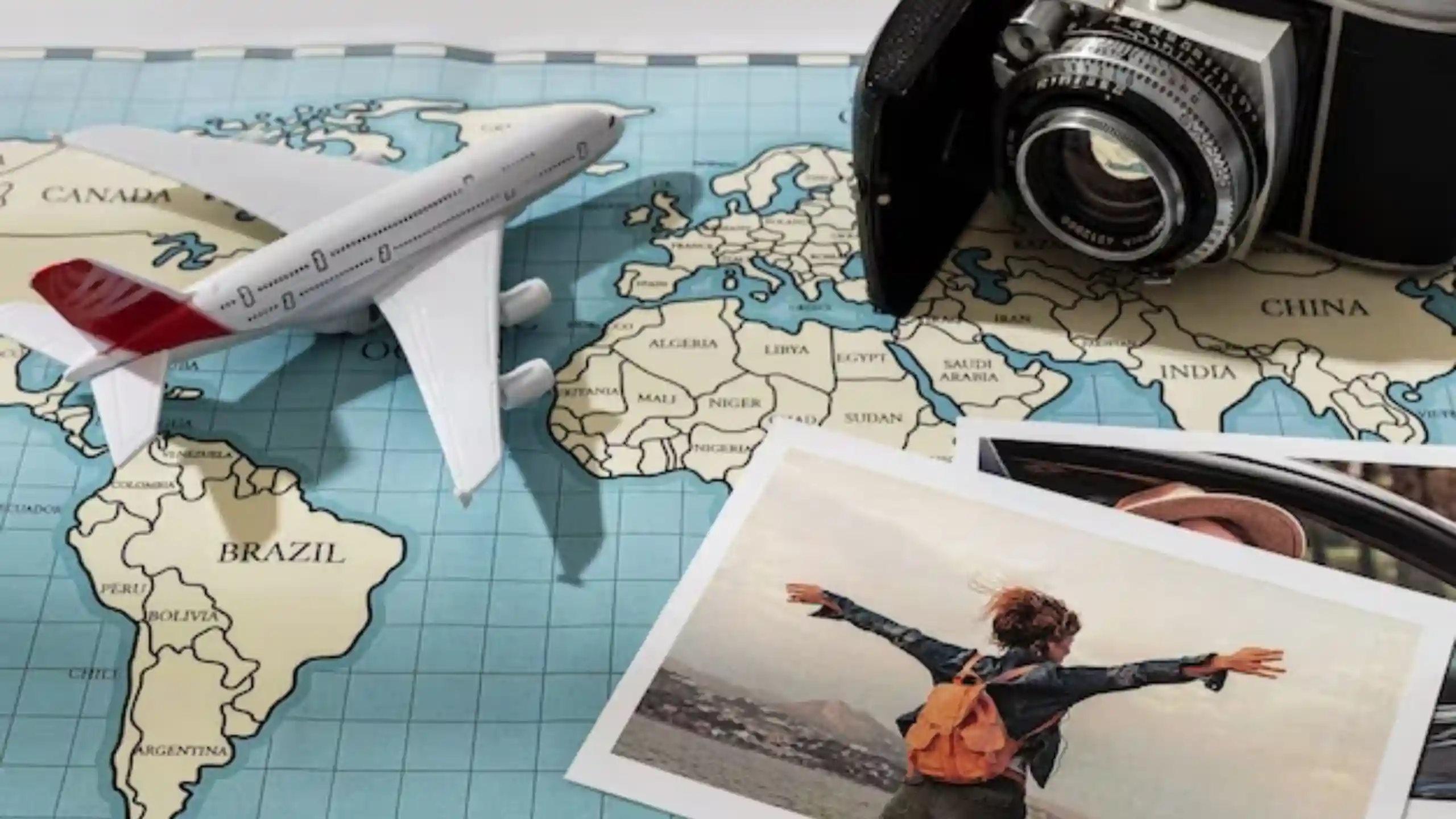
Vintage Travel Photography: The Charm of Capturing Vintage Travel Photography
- 9 minute read
Our Latest Instagram Posts
@amazingworld.travel8.

Press ESC to close

The Ultimate Guide To Cinematic Travel Videos
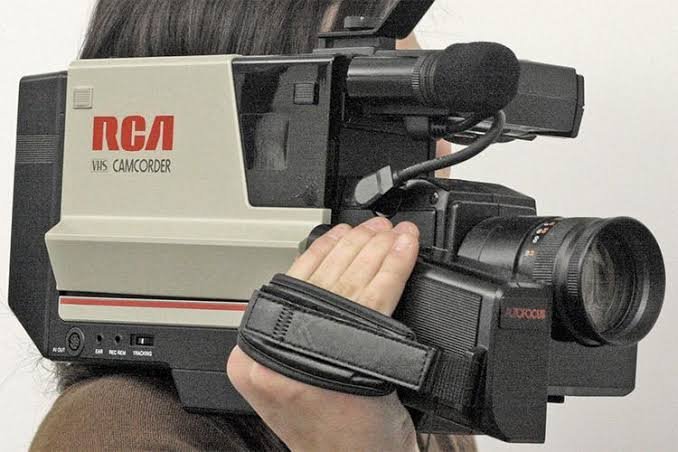
THE PRE-PRODUCTION PROCESS
Choosing the right camera for cinematic travel videos.
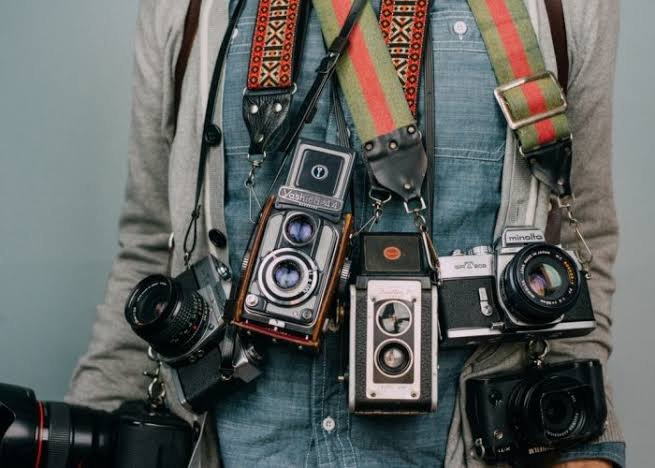
Get Inspired By The Best Travel Vloggers
Beautiful destinations.
Camera Gear You Need For Creating Awesome Cinematic Travel Videos
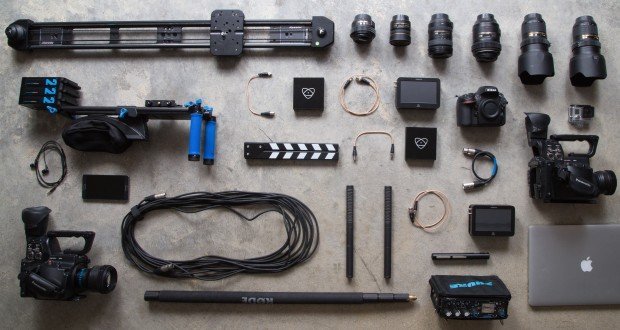
What’s In My Camera Bag?

- Canon 5D Mark 4 & Canon 60D with 2 batteries.
- DJI Osmo with 3 batteries.
- Intervalometer for hyper lapses.
- Variable ND filter for DJI Osmo.
- Canon 50mm, 18-135mm, 70-200, 150-600mm lenses.
- LG 360 Camera.
- Camera Slider.
- 3-4 SD cards and 2 microSD cards.
- Chargers and cables.
THE PRODUCTION PROCESS
Check your camera settings.
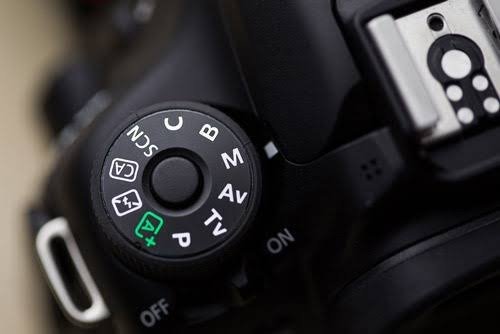
Shoot LOG For Better Post Production
- S-Log(Sony)
- Blackmagic Log
- Red Logfilm

Use Your Smartphone To Shoot Travel Videos
Use a stabilized gimbal, ditch your camera app use filmic pro.
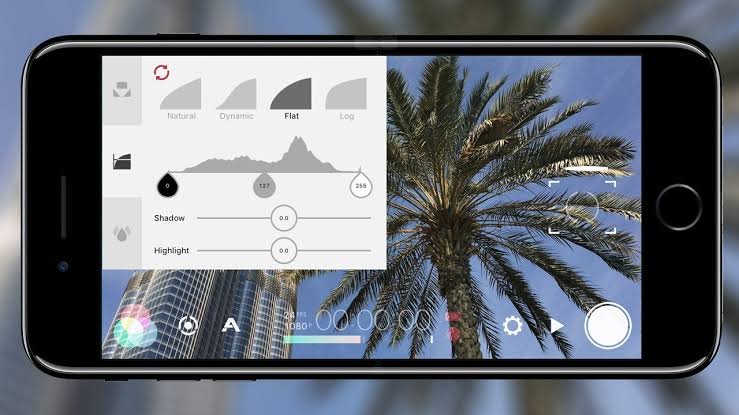
THE POST-PRODUCTION PROCESS
Choosing the right video editing software, make your cinematic travel videos stand out with transitions, 1. handy transitions for premiere pro, 2. 3333 videolancer’s transitions for after effects, 3. seamless transitions, 4. 4000+ all-in-one transitions, 5. 1000 filmmaking presets for premiere pro, 6. 700+ seamless transitions, exporting the highest quality travel videos for youtube.

- Codec: I use H.264 which is a standard codec that balances high visual quality with minimum file size. It helps in minimizing upload and processing times.
- Frame rate: Maintain your video’s native frame rate when rendering it. Stick with a constant frame rate throughout your entire video. Choose a ‘constant’ frame rate instead of a ‘variable’ frame rate.
- Bitrate: Bit rate is responsible for the visual quality and file size. Experiment with different bit rates if your file is too large or you’re not satisfied with the quality. I usually go with 30 Mbps for 4K, 25 Mbps for 1080p, and 15 Mbps for 720p.
- Channels: For best results, I recommend 2-channel Stereo audio.
- Codec: For best results, I recommend using AAC-LC (low complexity) for the audio codec.
- Data Rate: For best results, encode your audio at a constant rate of 320 kbit/s.
- Sample Rate: For best results, set your audio sample rate to 48 kHz. If your working set is already less than or equal to 48 kHz, leave it as is.
ESSENTIAL TIPS FOR CREATING ULTIMATE CINEMATIC TRAVEL VIDEOS
- Understand Your Equipment: Know how the camera you are working with will impact the image you are getting. You need to understand how different lenses will allow you to achieve different shots.
- Slow And Fast Motion: Slow motion should only be used to emphasize a story. Don’t overuse it. If it doesn’t add to the story don’t use slow motion. The same can be said for fast motion.
- Challenge The Angles: Doesn’t matter if you have a GoPro or a Canon 1DX Mark 2. Whatever you are shooting with, make sure you are telling a different story than just the stand-and-shoot.
- Music, Music, Music: It makes all the difference. With music, you have the choice to evoke emotions in the audience based on the song you choose. There are many great websites to download royalty-free music and songs for your travel videos.
- Stabilize Your Footage: There are two ways to stabilize your footage. The first one is by using software like Warp Stabilizer. Use that with caution as sometimes it can do bad things to your footage. Second and the most recommended one is getting a stable video inside of the camera so that you don’t have to use that extra step. Just use a stabilized gimbal to achieve buttery smooth footage.
- Tell A Story: Keep in mind the story you want to tell and work on it. Don’t insert random travel clips all together over music. There should be a bit of continuity and flow that shows what’s going on in the video.
- Cut With The Music: Tell your story with the story. What I mean is when you put together your travel video, take your footage and a song of your choice, then make everything based around that song. Every time you get that very audible beat, that is a great indicator that this might be a good time to cut to the next clip.
Leave a Reply Cancel reply
Photo Video Universe

- AR/VR Video
- Short Form Video Production
- Drone Photography
- Influencer Video Strategies
- Video Marketing
- Digital Photography
- Travel & Adventure Video Content
- Esports and Gaming
Cinematic Techniques to Create Stunning Travel Videos: A Guide
Imagine yourself sitting in a cozy living room, dimly lit by the orange glow of sunset, as your friends eagerly gather around the screen anticipating your latest travel video. You hit play, and suddenly… you’ve transported them to the charming cobbled streets of Portugal or the breathtaking mountains of Patagonia. Sharing your once-in-a-lifetime adventures should evoke excitement and awe from your audience. With expert cinematic techniques in your arsenal, your travel videos can be just as stunning as memories etched in your mind. Enter the world of visual storytelling, where we will unveil skills necessary to capturing extraordinary moments and turning them into captivating masterpieces that’ll leave your viewers craving more.
Our guide “Cinematic Techniques for Creating Stunning Travel Videos” covers a variety of techniques to help you elevate your travel videos. We discuss topics such as framing, lighting, camera movement, and editing to achieve a cinematic look and feel. Additionally, we provide examples of how these techniques have been used in real-world travel videos. This guide is a must-read for anyone looking to take their travel videos to the next level.
Camera Techniques for Cinematic Travel Videos

When it comes to creating cinematic travel videos, camera techniques play a crucial role in capturing stunning footage that transports the viewer to a different world. Even basic camera techniques, when executed well, can drastically improve the overall quality of your videos. One of the most important parts about filming video as opposed to stills is how you manipulate the camera’s settings while filming. For instance, shooting at a high frame rate and then slowing down the footage in post-production can create an eye-catching effect called slow motion. Slow-motion footage can make even mundane actions look more dramatic and engaging, perfect for capturing beautiful natural landscapes or fascinating cultural ceremonies. Along with frame rates, another important camera technique is controlling depth of field. A shot with shallow depth of field (where only a small portion of the image is in focus) draws attention to specific subjects and adds a cinematic quality to your travel videos. The Sony RX100M3 mentioned earlier is a great starter camera for experimenting with depth of field, with its fast lens that allows for wide apertures and therefore shallow depths of field. Some filmmakers may argue that good camera work alone does not automatically translate into good content. While it’s true that storytelling and composition play vital roles in making effective travel videos, mastering camera techniques can elevate your video quality from average to exceptional. Think of cinema as a symphony: while individual instruments such as the violin or drums play their part in creating music, it’s the harmony between them that creates something truly affecting. Similarly, it’s not enough to have skillful editing or excellent storytelling; each element must complement one another to create a truly impactful cinematic video. Now that we’ve discussed some general techniques for improving your cinematic travel videos with your camera, let’s dive into a specific camera technique that can be used to create dynamic shots: Moving Camera Angles.
Dynamic Shots with Moving Camera Angles
Static, unchanging shots may get the job done, but they can make your travel videos feel monotonous and unengaging. Introducing movement into your travel video shots is a great way to mix things up and bring visual interest to even seemingly mundane subjects. Here are some ways to add movement in your shots: Use Camera Slider: A camera slider is a piece of equipment designed specifically for creating smooth, gliding footage. Slide your camera along it slowly, capturing beautiful sweeping landscapes or cultural festivities with added motion. Control Your Pans and Tilts: Pan the camera laterally (side-to-side) or tilt it vertically to create smooth and dynamic movements within the shot; this technique is called panning and tilting respectively. Some filmmakers may argue that overusing moving camera angles can lead to viewer disorientation or detract from the story being told. It’s important to find the right balance between static and moving shots so that you aren’t sacrificing the narrative cohesion of your travel video for gimmicky camera tricks. Moving camera angles are like spices when cooking – too much, and the dish becomes overwhelming; too little, and it lacks depth and flavor. To explore this topic further, please refer to Tips for Shooting Stunning Adventure Photography. With these camera techniques in mind, you’re now equipped with some valuable tools for creating stunning cinematic travel videos. Next up in this guide: Location Scouting and Composition.
A 2020 survey conducted by Travel Film Network found that 80% of their top-rated travel filmmakers used drone footage to capture stunning aerial perspectives and to add depth to their videos. A study published in the Journal of Visual Communication in 2019 revealed that using transitions, such as match cuts or cross dissolves, between shots effectively held viewers’ attention and resulted in a more engaging and visually appealing travel video. A 2021 report from The Videomaker Association showed that shooting footage during the golden hour (sunrise or sunset) enriched the color tones of a video and significantly enhanced its visual appeal, leading to an increase in viewer satisfaction by up to 60%.
Location Scouting and Composition

When it comes to creating cinematic travel videos, the location you choose to film is just as important as how you frame the shot. Whether you’re filming in a bustling city or a serene natural setting, there are several key factors to consider when scouting your location. Firstly, think about the overall aesthetic of the location. Is it visually stunning? Does it have unique architectural features or landscapes that will make for captivating footage? As you scout your location, try to envision the types of shots and angles that will best showcase its beauty. For example, when I was filming in Paris, I knew that I wanted to capture footage of the Eiffel Tower from unique perspectives. Instead of simply filming from a distance like most tourists do, I scouted out a location on the rooftop of a nearby building where I could get an aerial shot of the tower with the entire city skyline in the background. The resulting footage was breathtaking and added an extra layer of visual interest to my video. Of course, not every location will offer such obvious opportunities for compelling shots. In those cases, it’s important to get creative with your composition. This might mean focusing on smaller details within the space or experimenting with different camera angles and framing techniques to add visual interest. For instance, if you’re filming in a busy market or street fair, you might consider shooting close-ups of colorful produce or interesting textiles rather than trying to capture everything happening in the space at once. By getting up close and personal with your subject matter, you can create a more intimate connection between your viewers and the location you’re filming in. No matter where you’re filming, always be mindful of lighting conditions. Golden hour (the time period just before sunset or after sunrise) is widely considered by photographers and filmmakers alike as one of the best times to shoot, as the light is soft and warm. However, depending on the atmosphere you’re trying to create in your video, harsher lighting conditions might be more appropriate.
When creating cinematic travel videos, the location you choose to film is just as important as how you frame the shot. As you scout your location, envision the types of shots and angles that will best showcase its beauty. You may need to get creative with your composition if there aren’t obvious opportunities for compelling shots. Lighting conditions are also an important factor to consider when filming – while golden hour offers soft and warm light, harsher lighting conditions may be more appropriate depending on the atmosphere you’re trying to create in your video.
Uncovering Hidden Gems and Unique Perspectives
One of the best ways to make your travel videos stand out from the rest is by uncovering hidden gems within your location and showcasing them in a unique way. This could mean exploring lesser-known neighborhoods or landmarks, seeking out local cuisine or cultural traditions, or simply finding new and interesting perspectives on familiar sights. When I was filming in Tokyo, I made it a priority to seek out off-the-beaten-path locations that would give my video a sense of authenticity and uniqueness. One of my favorite shots from the trip was filmed in an alleyway filled with street art that most tourists never even knew existed. By incorporating these lesser-known locations into my video, I was able to showcase the city in a way that felt fresh and unexpected. Think of uncovering hidden gems as peeling back layers of an onion. The more you explore and dig deeper into the location you’re filming in, the more nuanced and interesting your footage will become. Don’t be afraid to step outside of your comfort zone and try something new – sometimes the most unexpected adventures make for the best footage. Additionally, incorporating local voices into your video can help give viewers a deeper understanding of the culture and people within a location. Whether it’s interviewing a street vendor about their craft or speaking with a local historian about the significance of a particular landmark, adding these perspectives can help add context and depth to your footage. Of course, there’s always a balance to strike between showing off lesser-known locations and including more popular tourist attractions in your video. While it can be tempting to try and avoid all “touristy” areas, these locations are often popular for a reason and can be just as visually compelling as hidden gems. The key is to find unique perspectives or angles on these popular locations that set your footage apart from the rest. By scouting your location with an eye for interesting composition and uncovering hidden gems within the space, you can take your travel videos to the next level and create content that truly stands out in a crowded field.
Post-Production: Editing and Color Grading Techniques for Travel Videos

Creating a cinematic travel video is much more than recording footage on the field. Post-production plays an essential role in making your video stand out. In this section, we’ll delve into editing and color grading techniques to take your travel videos to the next level. The first step in post-production is organizing your footage. Review all your clips and mark the best shots that fit your vision. After you’ve sorted out the best takes, it’s time to start piecing together your story through editing. Use simple software like iMovie or Windows Movie Maker if you’re just starting or upgrade to advanced software like Adobe Premiere Pro for professional-level edits. One technique to elevate your video is to experiment with cutaways or b-roll shots. Cutaways allow you to transition from one scene to another seamlessly, add context, or emphasize details while b-roll footage works as an excellent storytelling device by showing different angles and perspectives of the same location or activity. Once you’ve assembled a rough version of your video, it’s time to focus on color grading. This process enhances the mood of your video, corrects white balance issues, and creates consistency between different scenes. If you plan on shooting with multiple cameras or in different lighting conditions, color grading can ensure that all scenes look cohesive. To simplify color grading processes during post-production, shoot in a format that saves all details called “log.” Using log recordings will give you more flexibility and control when adjusting colors, brightness, contrast, and saturation when editing. However, beware that log footage may look flat and unappealing at first glance but will look sensational after adjustment. To expand your knowledge, we encourage you to read our post about the Best Camera Settings for Epic Adventure Photography. When coloring grading remember that subtlety is key; adding too many filters often has an opposite effect where it looks overdone rather than cinematic. It’s like adding too much salt to a dish while cooking, which ruins the taste instead of enhancing it. So, keep the changes subtle and aim for a consistent look.
Smooth Transitions and Sound Design Techniques for Travel Videos
The final stage of post-production is adding finishing touches, transitions, and sound design to your video. The quality of transitions between each sequence can make or break your video’s flow by either keeping the viewer engaged or confusing them. In this section, we’ll dive into how to create smooth transitions for your travel videos. Before jumping into editing, choose music that complements your story and overall mood. Some argue that using famous songs or hits you enjoy won’t help you with copyright strikes and avoid it altogether. You could opt for royalty-free music offered on websites such as Epidemic Sound, Artlist, or Audiojungle. As part of sound design, use ambient noises like birds chirping or waves crashing on rocks in transition scenes to add depth to the video. The simple noise adds authenticity to the scene bringing viewers closer to nature, culture or whatever is happening in that moment. Transition techniques are many; one useful technique is using slow motion with match cuts when switching from one scene to another scene with similar elements (e.g., a close-up of someone’s eyes in one scene to a flower in close-up shots). This can create a powerful connection between two unrelated scenes and evoke a feeling of unity and significance. Effective storytelling through cinematic techniques takes time and patience but crafting a compelling story pays off in the end. By implementing these tips during post-production stages, you can transform raw footage into an outstanding cinematic travel video that will engage and inspire your audience.
Storytelling Strategies for Engaging Travel Videos

When it comes to creating travel videos that truly captivate and connect with your audience, storytelling is arguably the most important aspect. While stunning visuals are important, they must be accompanied by a captivating narrative that keeps viewers engaged from start to finish. To help you achieve this goal, here are some storytelling strategies for creating engaging travel videos. Start with a Plan: Before you set off on your travels, take time to plan out your narrative. Consider the story you want to tell and how you can convey it through your footage. Think about the key themes or messages you want to communicate and how you can use different shots and clips to weave them into a cohesive narrative. Use People as Protagonists: One of the most effective ways to connect with your audience is through relatable characters. When filming your travels, focus on featuring people who embody the essence of the places you visit. This could be locals you meet on your travels or fellow travelers sharing their experiences. By using people as protagonists, you provide a relatable entry point for viewers and help them form an emotional connection with your content. Mix Up Your Shots: A great way to keep viewers engaged is to mix up your shots and vary your camera angles throughout your video. Using static shots throughout can quickly become monotonous and lackluster. Mix in dynamic shots like drone footage or moving time-lapse sequences to add visual interest and keep viewers on their toes. Analogously, just as a great novel mixes up chapters or a great movie varies camera angles, mixing up shots in your travel videos adds drama, interest, and can captivate an audience in the same way. Lean into Authenticity: With social media being so prevalent today, there’s often a pressure to present only the best aspects of your travels, editing out any imperfections or blemishes. However, there’s a growing trend towards authenticity in travel videos, with viewers seeking out content that presents a more honest and realistic representation of the destination. By embracing authenticity and showing the real, gritty, and imperfect side of travel, you can create storytelling opportunities that could otherwise be missed if all your shots are rehearsed or staged. Pay Attention to Detail: When it comes to storytelling in travel videos, it’s often the small details that make all the difference. Take time to film close-ups of local architecture or traditional textiles, as well as snippets of interesting conversations with locals you meet. These little moments can add depth and richness to your video and help transport viewers to the location you’re filming. Find out more by reading this article Capturing the Magic of Everyday Life on Your Travels. In conclusion, creating captivating travel videos requires careful attention to storytelling techniques. By planning out your narrative, using relatable characters as protagonists, mixing up your shots, leaning into authenticity, and paying attention to detail, you can create videos that truly connect with your audience. So don’t just capture the beautiful landscapes – tell the stories behind them!
Related Posts
Food & travel: how culinary videos are influencing tourism trends, monetizing travel photography: how to sell your photos and make money on the road, capture the night sky: a guide to travel photography, leave a reply cancel reply.
Save my name, email, and website in this browser for the next time I comment.

Travel Ritz
Grab Fun with Travel

Creating Cinematic Travel Videos: Tips and Techniques
Creating cinematic travel videos is an art form that requires a combination of technical skills and creativity. Travel videos are a fantastic way to capture the essence of a destination and share your experiences with others. Whether you are a professional filmmaker or a casual traveler looking to document your adventures, the tips, and techniques for creating cinematic travel videos can help you take your videos to the next level.
To create cinematic travel videos, you need to pay attention to several key aspects of the video-making process, such as equipment, planning, shooting, editing, and sound design. Choosing the right equipment, planning your shots, and using effective shooting and editing techniques can make a significant difference in the final product. Additionally, sound design is a critical aspect of creating cinematic travel videos that can help you transport your audience to the places you’ve visited.
In this article, we will discuss the essential tips and techniques for creating cinematic travel videos. We will cover everything from selecting the right equipment and planning your shots to using shooting and editing techniques and sound design effectively.
Table of Contents
Equipment for Cinematic Travel Videos
When it comes to creating cinematic travel videos, having the right equipment is crucial. The quality of your video depends on the equipment you use, so investing in high-quality gear is essential. A camera is the most important piece of equipment for creating cinematic travel videos. DSLR or mirrorless cameras are popular choices because they offer high-resolution images and interchangeable lenses. It’s essential to select a camera with excellent low-light capabilities for shooting in dimly lit environments.
Along with a camera, a good stabilizer is also essential for creating smooth and stable shots. A tripod or a gimbal can help stabilize your camera and reduce shaky footage. A stabilizer is particularly useful when shooting video while walking or moving, as it can help create a more cinematic look. Additionally, filters can help you achieve specific looks and effects, such as neutral density filters for long exposures or polarizing filters for removing reflections.
Planning Your Cinematic Travel Video
Planning is a critical aspect of creating cinematic travel videos. Before you start shooting, it’s important to have a clear plan for your video. This includes selecting a location, determining the narrative, and scouting the area. Selecting a location is one of the most important aspects of planning your cinematic travel video. Choose a location that has a unique and visually stunning landscape or architecture that can help you tell a compelling story.
Determining the narrative is also essential for creating a successful cinematic travel video. Decide what story you want to tell and what emotions you want to evoke in your audience. Plan the shots that will help you convey your message, and consider the pacing and flow of your video. Scouting the area ahead of time can also help you plan your shots and prepare for any challenges you may encounter while shooting. By planning ahead, you can save time and capture the footage you need to tell a compelling story.
Shooting Techniques for Cinematic Travel Videos
Shooting techniques are essential for creating cinematic travel videos that capture the essence of a location. There are several shooting techniques that you can use to make your videos look more cinematic. One technique is the rule of thirds, which involves dividing the frame into thirds and positioning the subject at the intersection of the lines. This technique can create a more dynamic and visually interesting composition.
Another technique is using depth of field to create a sense of depth and focus on the subject. A shallow depth of field can help blur the background and draw attention to the subject. Additionally, using slow motion or time-lapse can help create a more dynamic and visually interesting video. Slow-motion can help capture details that are often missed in real-time, while time-lapse can help show the passage of time.
When shooting cinematic travel videos, it’s also important to pay attention to the lighting. The golden hour, which is the hour after sunrise and before sunset, is a great time to capture beautiful lighting. Additionally, shooting during blue hour, which is the period of twilight before sunrise or after sunset, can also create stunning and moody shots. By using these shooting techniques and paying attention to lighting, you can create cinematic travel videos that capture the essence of a location and tell a compelling story.
Editing Techniques for Cinematic Travel Videos
Video editing is the final step in creating cinematic travel videos. Video editing is where you bring all the footage together, create a narrative, and add music and effects. One editing technique for cinematic travel videos is using color grading to create a consistent and cinematic look. This involves adjusting the color and contrast of your footage to create a particular mood or feel.
Another editing technique is using transitions to create a smooth flow between shots. Crossfades dissolves, and cuts are all common transitions used in cinematic travel videos. Adding music and sound effects can also enhance the cinematic experience. Consider using music that fits the mood of your video and adding sound effects that help bring the location to life.
When it comes to video editing, it’s important to pay attention to pacing and timing. Cut out any unnecessary footage and use the pacing of your shots to create a dynamic and engaging video. Finally, make sure your video is optimized for online viewing by exporting it in the appropriate format and resolution. By using these editing techniques, you can create cinematic travel videos that leave a lasting impression on your audience.
Sound Design for Cinematic Travel Videos
Sound design is an often-overlooked aspect of creating cinematic travel videos, but it can have a significant impact on the overall experience. Sound design includes the use of music, sound effects, and ambient noise to enhance the mood and emotion of your video.
Choosing the right music is key to creating a cinematic feel. Consider using instrumental tracks that fit the mood of your video. Sound effects can also help bring your footage to life. Adding natural sounds like birds chirping, waves crashing, or footsteps can create a more immersive experience.
When it comes to ambient noise, it’s important to pay attention to the quality of your audio. Wind and background noise can often be distracting, so consider using a windscreen or recording in a quieter location. You can also use audio editing software to remove unwanted noise and enhance the quality of your audio. By paying attention to sound design, you can create cinematic travel videos that engage all the senses and leave a lasting impression on your audience.
In conclusion, creating cinematic travel videos takes time, effort, and a bit of creativity. By following the tips and techniques outlined in this article, you can create travel videos that capture the essence of a location and tell a compelling story. From planning and equipment to shooting and editing, every aspect of creating a cinematic travel video plays a crucial role in the final product.
Remember to pay attention to the details, including sound design, color grading, and pacing, to create a more immersive and engaging experience for your audience. With practice and experimentation, you can develop your own unique style and create travel videos that inspire and captivate viewers.
So, whether you’re a professional videographer or just starting out, use these tips and techniques to take your travel videos to the next level and create cinematic masterpieces that showcase the beauty and diversity of our world.
Related posts:
- Style Society Guy Menswear Blogger Nyc for Everyone
- Dad and Buried the Anti Parent Parenting Blog Reviews!
Unfurl a Beauty called kerala
- 12 Common Travel Photography Errors and How to Avoid Them
Related Posts

How i Sleep at Night Knowing l’m Failing all my cl – tymoff

How to choose the professional industrial hardware agency

Hiking Shorts: An Essential Part of Your Next Camping Trip
Begin typing your search term above and press enter to search. Press ESC to cancel.
That Traveling Chick: Female Travel Blogger
Join our Travel Tidbits E-News
And get a FREE Travel Packing Checklist
Let’s Get Social
The ultimate guide to cinematic travel videos.
March 5, 2022 by Joslyn Leave a Comment

Are you someone who loves streaming endless hours of exotic landscapes and captivating drone shots? Do you get inspired to create one yourself? Then this is the perfect place for you.
In this guide, you will explore all the practical tools and techniques you need to create an exciting, cinematic, and meaningful travel video. You can apply these techniques with any software and with any film camera.
Research the Location
The preparation phase might not be as fun as filming or traveling, but the first step to creating a travel video should always be researching the place you will be traveling to and drawing inspiration from it. Figuring out the logistics, scouting for locations, and getting familiar with the local culture, will help you plan your video storyboard and trip. If you are going to a picturesque location, you can look up architectural locations that you can capture while researching. Or all the famous places that are worth being in a travel video.
Chalk Out a Plan Before the Shoot
Every shot in every recording should be prepared and planned for. Be your director and visualize what the final shot would look like. Visualizing will bring you some sense of clarity, so you are not struggling to think of the next shot in the hustle-bustle of the shoot location.
Practice Tirelessly
Learn travel video techniques from communities and online forums. There are many YouTube videos on travel videos that you can start with. You can actively participate in the how-tos and apply the techniques in your videos.
For that, you don’t need to travel to an exotic location. Start in the backyard of your house or the community garden in your locality. Alternatively, you can interview family members around the house, shoot your town in a cinematic way, just practice.
Get the Right Equipment
An artist is nothing without his tools. As a videographer, you need a good one. Choice of your videography equipment should be based on how you intend to use your camera. The next point of consideration should also be what you intend to do after recording the video. If you will only look at your recording on a computer or perform little to no post-production, a high-quality compact camera that fits right in your pocket should be best suited for you.
Another great option for a travel video camera is one with a tiltable screen. You can easily move them around and play with a range of positions. No matter how you move the camera, you will still have a decent view of the scene in front of you.
Set Up Your Camera Gear
The gears that supplement your shoot are as important as the main camera. While packing gears for your travel shoot, the most important question you need to ask yourself is, “what kind of video will you be making?” That’s where answers to your gears lie.
Before asking the question, note down all your shots in a planner or a notebook. If you have a time-lapse video to shoot, you would know you need to carry a tripod and remote shutter for hyper-lapse.
Pack your camera slider if you are going for more smooth moving shots in your travel video. Another option is to get a monopod to manage handheld shots with ease. If you already have a drone with you, it always makes sense to carry it with you. Drone shots can drastically elevate the overall production value of your travel videos and make them look more cinematic and larger-than-life.
From a general perspective, some of the basic must-have gears include-
- A tripod or a gimbal
- A solid microphone to capture crisp audio
- Stabilizer or shoulder mount rig
- Extra batteries
- Memory cards
- An external lighting system (optional)
The rules with gears are always flexible. We have all seen those stunning transitions and landscape shots on Instagram shot from the latest smartphones. This means there’s always room for savings in this area. You could easily get away with just a smartphone, microphone, and a gimbal. If you are strapped on a shoestring budget, these 3 are the types of equipment you should start with.
Focus On the Journey as Well
While destinations are most important, travel videos showcase the journey. This means recording moments that lead up to the destination. For example, the cab you took to your accommodation, the walk to the restaurant, or the mountain top hike . These moments will bring you the most cinematic shots of your videos.
Get the Edit Right
While editing a travel video, you need to focus on a few key elements – the choice of background music, the pacing of the video, the transitions and sequence of your shots. You can use online free video cutter to crop off the parts that may not align with the rest of the video. This way, you will have video clips that you for sure want in the final video.
Paying extra attention to the transition in the post-production process can truly transform an average video into a stand-out one. Zoom shots, rotations, and slides are the most commonly used and well-received transitions in the travel video space.
Capture the Emotions
Sure, drone shots are stunning, but the real essence of any travel location lies in the people. A lot of travel video creators miss this critical point. Recording moments from everyday lifestyles is a sure shot way to connect with your viewers. It makes them feel like they are a part of the vibrant, cinematic landscape you showcase in your videos.
Switch Between Different Angles
No matter which equipment you are shooting with, make sure you are not shooting while standing in just one position. Challenging the angles allows you to capture different perspectives and tell a different story.
When learning how to shoot cinematic videos, it can take a bit of practice to find what works for you. All you need to do is invest your time and effort. Put in the clock to experiment with different techniques keeping the above guidelines in place. Keep experimenting until you fine-tune your style, and then you’ll be on to creating stand-out videos in no time!
About Joslyn
Female Travel Blogger Sharing Travel Tips, Work and Travel Tips, Budget Travel Tips and general daily life from a travel chicks point of view!
Reader Interactions
Leave a reply cancel reply.
Your email address will not be published. Required fields are marked *
Save my name, email, and website in this browser for the next time I comment.
Helping women all over the world learn about travel, earning money to travel and while traveling.
Join the Facebook group of over 19k women travelers and wanna-be travelers.

This website contains affiliate links. If you buy through them, we receive a small commission at no extra cost to you. As an Amazon Associate, I earn from qualifying purchases.
Privacy Policy and Disclosure
thattravelingchick
🌺 For the Wanderlust in Everyone ✈️ Travel Tips & Tricks 📍 Currently in: Michigan ✋🏼🇺🇸
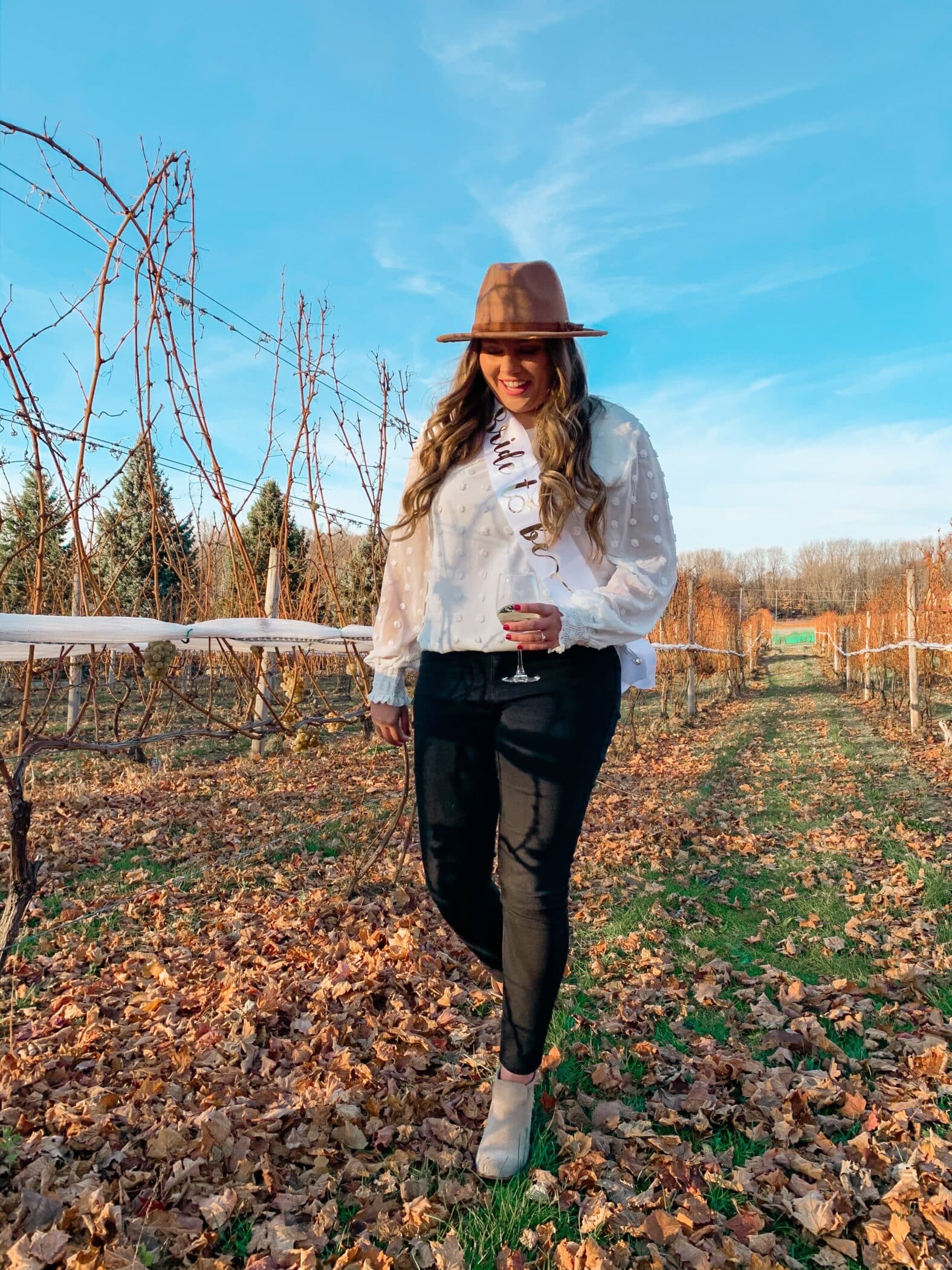

How to Make a Travel Video in 3 Easy Steps with Ideas & Pro Tips
- how to make a travel video

There are very few categories that offer as much possibility for rich and engaging storytelling as that of travel. Beautiful locales, thrilling adventures, and gripping anecdotes provide a whole lot of content fodder for travel creators and brands!
But that doesn’t mean that making travel videos is a piece of cake. Far from it. In addition to having the technical know-how and an eye for detail, you also need to know how to weave a story around the content you shoot – and for this, you need to constantly ideate and execute. So if you’ve been wanting to make it in the travel space and are wondering how to make a travel video, this article is just what you need.
In the following sections, we will be taking you through everything you need to know about creating travel videos in addition to sharing some of the best ideas you can get started with. If you already have something in mind and would like to get started right away, you can sign up for a free account on InVideo and start bringing your travel videos to life.
Create cinematic travel videos
Without spending hours on editing

Here’s what we will cover:
1. The basics of how to make a travel video 2. Top 7 travel video ideas 3. Pro tips to create travel videos
Let’s dive in.
1. Basics of making travel videos:
While making any video you need to go through the steps of ideating, planning, and executing. But when you’re carrying these steps out in the travel video space, you need to hone several other skills in addition to that of filmmaking, such as time management, thinking on your feet, and acting quickly. So to help you get better at making travel videos let’s take a look at what you need to do.
A. Planning and pre-production
A lot of people believe that planning is an optional step when it comes to creating travel videos because the activity of traveling in itself is so unpredictable. But if you’re looking to create travel videos that leave an impact, planning and pre-production are absolutely indispensable to the process.
Planning for a travel video includes everything from ideation and scripting to location scouting and storyboarding. But all of these processes look very different from how you would do these for regular videos – for the sole reason that there is a huge amount of uncertainty that comes with the process of travel. Filmmaker Aidin Robbins explains the process of planning very well in this video:
Here’s a short outline of how you can go about it:
(1) Ideation
Ideating for a travel video begins with deciding upon a location and then figuring out in what light do you want to present that location. Do you want to create an educational video on the place or showcase its culture or is there a particularly interesting story about the place that you want to bring to light? Your answers to these questions form the basis of your idea.
(2) Research
Once your idea is ready, you want to go ahead and gather as much information as you can about the place – through blogs, youtube videos, personal anecdotes, and even interviews. You want to look up images and videos to get an understanding of what the place looks and feels like. This is super important in helping you plan out your shots later.
(3) Outlining
Once you have the idea and your basic research in place, you want to create a rough outline of the flow of your video. This is where the storytelling aspect kicks in. Mind you this is not a full-fledged script because that isn’t really possible at this stage. With the outline, you want to ask questions such as how do you want to start your video? What is the hook? How will the story flow and how will it end? Here is also where you want to cite any references for creative inputs and ideas.
(4) Plan your shots
Now this is not something that you have complete control over. However, having a basic understanding of how your story flows as well as the shots and angles that will complement the scenes in your story is super important. This will allow you to be mindful of the kind of shots you take. You can create a shot list of the basics that you want to cover so that even if unprecedented events happen, you can still get decent shots from your trip. You can also create a storyboard to help with this process but that is not mandatory.
(5) Figure out your equipment
Depending on the location you’re traveling to, how long you plan on being there, what your living situation is going to be like and other important factors, you will have to decide on your equipment. You will require a professional camera with a few different lenses, a gimbal to take moving shots, a good on-camera microphone to record audio, and also preferably a drone to get cinematic aerial footage. Check out this blog for a complete list of the kind of equipment you will need.
B. Shooting your travel videos
When shooting travel videos you want to think about what that place represents and what emotion it evokes. That is what you want to capture in your shots. The best travel videos are ones that make the viewers feel like they’re traveling with the creator – and generating that emotion is only possible if you know what elements of the place you want to capture in your footage. This holds true even for vlogs – scout the place before you begin filming to get the best shots.
Keep your list of shots from the planning stage handy to ensure you get everything you need. And ensure you capture shots from the journey and not just the place itself b because unless you’re taking your viewers on a journey, it doesn’t evoke the kind of emotion you want it to.
Another thing you want to ensure is simply shooting a lot! In most cases, less than 1% of your footage will make it to the final cut. But for that to happen, you want to ensure you have enough footage, to begin with. The worst feeling is to come back after the trip to edit your video only to realize you missed out on getting good shots. For a more in-depth understanding of how to shoot your travel videos, check out this guide by Parker Walbeck
Of course, a lot of your travel video story is also refined during the editing process , which is what we will be looking at in the next section.
C. Editing your travel videos
If you’ve planned right and shot according to the tips we shared above, your editing process will be all smooth sailing. But as we’ve already discussed, creating travel videos is different from creating other types of videos, which is why you need to pay special attention to different elements.
When you’re editing a travel video, in addition to having great clips, you also have to pay close attention to your choice of music , the sequence of your shots in the final edit, the pacing of the video, as well as the transitions and text you use. An editor like InVideo makes this easier because it already has most of these features inbuilt – allowing you to access and use them at the click of a button.
Travel videos appeal to people’s wanderlust, which means you want to focus on recreating that emotion while editing. Again, you need to go back to your script and storyboard here to first get an understanding of the kind of emotion you want to convey – are you making a fun holiday video or are you showcasing the culture of a place? In each connotation, the editing style is going to be vastly different. For a fun, festival video, you will have upbeat music, fast transitions, and creative text whereas, for a documentary-style video of a destination, you will probably prefer more acoustic music with mellow tunes, simple transitions, and minimalistic text.
Here’s a video by popular travel creator Lost LeBlanc explaining his process of editing a travel video:
Now your editing process will depend heavily on the kind of software you choose to edit on. If you already have some video editing experience and have a robust enough system, you might want to choose professional software like Adobe Premiere Pro or Final Cut Pro.
But if you’re just starting out, you want to use an editing tool that will let you create stunning edits with ease. This is where InVideo comes in. With an extensive library of over 5000+ templates along with ready-made assets like animated text boxes, stickers, call to action, music and sound effects, stock footage, transitions, and more, InVideo makes it super easy for you to edit your travel videos.
2. 7 ideas you can use to create your travel videos:
Now that you have a fair idea of how to go about creating travel videos, let’s take a look at some top-performing travel video ideas to kick your travel video creation into high gear.
Idea #1 - Start your own travel vlog
Travel vlogs are a great way to start your travel video journey. As a travel vlogger, you can start recording your trips, talking to the camera and your viewers, sharing your feelings about your trip, your first impressions, your expressions as you try various food items in real-time, and more. The best part is that travel vlogs don’t even need to be professionally edited. They can be shared even live in real-time, as viewers expect travel vlogs to be raw and real in many cases.
For example, Mina, an American travel vlogger, shares her vlogs from various places she visits across the world. Check out this video of her experience at the Zen capsule hotel in Japan.
Travel vlogs allow you to build your brand, find a niche as well as work towards earning opportunities.
Idea #2 - Create helpful how-to travel guides
You don't have to strictly do videos about your trips. You can create video guides for travel enthusiasts or creators as well. You can share tips, ideas, and knowledge with your tribe through beautifully crafted videos.
For example, check out travel YouTuber Sorelle Amore’s videos. She helps viewers create content like her through travel guides. She also inspires you with stories on how to live free and abundant as she does. Check out this video where she shares tips to travel on a budget.
If you want to create travel videos with a message, you’ll get lots of inspiration on Sorelle’s YouTube channel . Meanwhile, you can create your own travel tips and tricks video using this fully customizable template from InVideo :
Use This Template
Idea #3 - Share unique or strange travel experiences through your videos
Your travel videos can become a medium for you to share your personal, unique, or strange stories. You might have experienced unique events across your trips. You might be into tasting local, but strange food, trying out local dresses, and more. All of this can be a part of your travel videos.
For example, YouTuber Mike Corey’s mission is to conquer his fear of the unknown by traveling to strange and unique places and experiencing uncomfortable events. Check out this video on Mike’s camping experience at a place called Satan’s Castle in Turkey.
These videos are a glimpse into Mike’s methods of overcoming fear and insecurity. Whether you too want to overcome a personal fear, or you’re looking to create unique travel videos, you too can share strange stories, experiences, and events you met on your journey in your videos. Not only will this make your videos more interesting, but you’ll also get attention for doing something different.
Edit and create your own quirky video about strange travel facts with this World’s Deadliest Snakes template.
Use This Template
Idea #4 - Share food stories and reviews in your travel videos
If you are a foodie and love tasting new delicacies while on the go, you can make travel videos about food and culture. Your videos can provide viewers with a peek at different food cultures, cooking methods, and flavors across the globe.
For instance, YouTuber Mikey Chen travels to various countries and eats all the local food he can get his hands on. You too can similarly marry your two interests - travel and food. Check out this video where Mikey shares updates on his quarantine meals during his latest visit to South Korea.
Mikey’s videos are not just about his interests and passions. He has also successfully created merchandise around his content and sponsors various brands and products through his various YouTube channels. If you love to sample different food items, you too can create videos like Mikey, focusing on the food during your trips.
Customize this video to create your own exploration of food and culture across the globe!
Idea #5 - Spread your message of positivity and love in your travel videos
You can create travel videos about love, friendship, and positivity you come across on your trips. Share stories of how people across the globe are all linked by a common thread of compassion and good can be found everywhere.
For example, Phil, a black dude traveling all over Europe creates videos to promote positivity, love, and break barriers, in association with the Matador network. His videos show him going to various countries and cities and connecting with people, smashing stereotypes in the process. Check out this video on a Black traveler’s guide to Milan.
His videos offer a unique perspective, showing us how a black guy approaches and mixes with the European people. Just like Phil, you can take your viewers through the various places you visit, taking in the sights, eating the local food, and doing fun things across the city. You too can create your travel videos sharing your unique perspective, message, or narrative. All you need is a different way of looking at the world!
Idea #6 - Create 1-minute videos highlighting a city (or any place)
Create one-minute videos of a city or a place your visited and loved. You can feature time lapses, unique shots, and more to make these videos look relatable. These videos can be really helpful to viewers who actually want to travel to these cities and countries as they give a glimpse of the destinations and their highlights. They can also be fun to watch, keeping in mind the short attention spans of most people today.
For example, Cailin from YouTube channel Travel Yourself is known for is her “City in a minute” video series. Cailin shares the highlights of the city (or any place), the culture, the food, and any other relevant information, all in a minute. Check out this video by Cailin featuring Israel in a minute.
Show off your impressive travel highlights in your own 1-minute (or longer) video with this themed slideshow template.
Idea #7 - Share video tour reviews, advice, and answer questions
If you are wondering how to make travel videos and are looking for inspiration to start, you can begin by doing reviews of local services, food reviews, restaurant or homestay reviews, and more. Share updates on the key points of a trip, give information on how to reach your destination, what does the trip involves, what is your itinerary, the cost, and more. Your videos can also answer the most frequently asked questions about a place or a trip.
For example, travel YouTuber Christianne started vlogging her journey as a response to commonly asked questions about her trips across the globe. Now she shares everything from life updates to travel itineraries and experiences in the form of travel videos. Check out this video by Christianne featuring Medsailors (a cruise trip) in Croatia.
Edit and customize this template to create your own travel advice video, including details of the trip for prospective travelers.
3. BONUS: Pro tips while making travel videos
If you want to create stunning travel videos, that make people stop scrolling, you’ll need to do your homework in terms of planning your trip and other aspects. In the section below, we share some super actionable tips that make it possible for you to make your travel videos more impressive and engaging.
Tip #1 - Understand your gear
Before you set out to capture beautiful locales and happening adventures, you will need to know how to capture them. Understanding your equipment is essential to getting the best output. Know and practice using your camera and mic in various different settings to know what kind of output it yields.
Study your equipment ’s manual to know how to use different controls. You don’t want to miss capturing a beautiful moment because you were fumbling with the controls on your camera.
Tip #2 - Refine your gear
When you’re starting out it is easy to get swept up by cool gadgets and the latest camera, but the truth is you don’t need a whole bunch of equipment to film good videos. As you hone your craft, refine your gear simultaneously. Your aim should be to be able to travel as light as possible while getting the best quality of the footage.
You can do this by first understanding your style of filmmaking and then sticking to gear that helps you achieve that the best. For instance, if you’re someone who primarily uses wide-angle shots in your travel videos, you might not need to carry multiple macro or telephoto lenses.
The thing to note here is that this kind of refinement comes with practice and experience. So don’t beat yourself up about not getting it right on the first go.

Tip #3 - Capture as much of the journey as the destination
As we’ve mentioned before, travel videos are about showcasing the journey. Even if you’re making a tips and tricks video, if you can make people feel like they’re part of the process – your videos will do much better. This means capturing shots that depict the journey – hiking to the top of the hill, taking a cab to the temple, walking to the restaurant, and others like it.
Tip #4 - Film the people of the place
Yes drone shots of the ocean and close-ups of the forest leaves are beautiful, but the real essence of a place lies in its people. A lot of travel creators don’t realize how crucial this element is. Capturing life and emotions and depicting that in your story is one of the best ways to evoke feelings of belongingness in your viewers and this is not something you want to miss out on.
For instance, check out this video on one of the oldest cities in the world, Varanasi, India, by YouTuber Ben Mikha, depicting the local people and everyday life. It makes the viewer feel like they are a part of the chaotic and vibrant landscape as well.
Tip #5 - Shoot more than you think is necessary
As we had mentioned above, roughly 1% of all your footage is likely to make it to the final edit . This means you need more than enough legroom to play around and experiment with. Even if you feel something is unnecessary at the moment, capture it because you will not truly know if something is unnecessary unless you bring it to the edit table.
Tip #6 - Organize your footage on the go
Unless you’re on a weekend trip, not organizing your footage on the daily is a huge mistake. Since you will be shooting a lot, if you fail to organize on a daily basis, it will become a mammoth task to have to sift through the entire media from your trip at the end.
Tip #7 - Carry enough storage and battery
This means memory cards, hard drives, and battery backup. The worst thing to happen while filming is having your memory cards or battery run out preventing you from filming what you need to. Keep multiple memory cards, hard drives, and power banks to ensure your filming goes as smoothly as possible.
Create inspiring travel videos easily
With 8 million+ stock assets

Wrapping Up
So the next trip you decide to go to, make sure to carry all the necessary equipment and plan your itinerary before you set out. With a little effort towards finding the best locations and angles to shoot from, you can create stunning travel videos that draw viewers in. If you are planning to create a travel video channel or brand, you definitely want to check out this ready reckoner of top video ideas that you can create in the travel space. Use these video ideas to craft engaging travel videos in 2022.
If you have any questions or want to continue the conversation, hop over to the InVideo community and learn from 25K other marketers and video creators just like you! Or check out InVideo’s YouTube channel to learn more video editing hacks and tricks!
And, if you’re looking to create thumb-stopping videos in minutes (even if you’re not a PRO)- sign-up for a free account on InVideo.io today.
This post was written by Upasna and edited by Adete from Team InVideo
Let’s create superb videos
50 Amazing Travel Video Ideas and Tips – Capture Your Adventure in Cinematic Style!
By: Author Valerie Forgeard
Posted on Published: June 26, 2023 - Last updated: July 1, 2023
Categories Travel
Are you an avid traveler looking to capture your adventures on camera? Or maybe you’re a YouTuber looking for the perfect video idea? Either way, this list of 50 video ideas for travel blogging, your Youtube and Tik Tok channels, is sure to inspire you!
From visiting local hotspots to exploring hidden gems to checking out exciting activities, there are plenty of ways to create captivating travel videos that keep viewers coming back for more. We’ve also compiled our top tips for making a great travel video to ensure your next project is worth watching. So grab your camera, and let’s get started!
- A culinary tour of the city : showcase a city’s diverse culinary offerings by visiting different restaurants and showcasing the unique flavors and ingredients of the region.
- A visit to a local street food scene : Take viewers on a tour of the local street food scene, showcasing the different types of street food, introducing popular street food vendors, and providing insight into the region’s local food culture and culinary heritage.
- A road trip through scenic routes : Films a trip through picturesque landscapes, highlighting the region’s natural beauty and showcasing local landmarks and attractions along the way.
- A Day in the Life of a Local : Provide a glimpse into the daily life of a local, showcasing their routines, customs, and daily activities and giving an authentic insight into the culture and lifestyle of the region.
- A tour of historical sites : Take viewers on a journey through a region’s history, visiting famous landmarks and monuments and informing them about the significance of each place.
- A visit to a local cultural festival : Take viewers on a tour of a local cultural festival and show the various performances, activities, and events that take place during the festival, highlight the cultural significance and heritage of the festival, and provide insight into the local culture and traditions of the region.
- A film about a local tradition : showcase a specific local tradition, such as a traditional dance, religious ceremony, or cultural event, and highlight its history, significance, and cultural importance. The video provides a detailed look at the tradition and the people participating and gives a sense of the local culture and heritage.
- A self-guided walking tour of the city : this video shows famous landmarks, historical sites, and picturesque locations. The video describes the places and their history in detail and gives travel tips on taking the perfect selfie at each location.
- A hike through a national park : explore the natural beauty of a national park and show off the area’s diverse landscapes, wildlife, and natural features.
- A stay at a luxury hotel : showcase the amenities and services of a luxury hotel by showcasing the luxurious accommodations and amenities and giving a glimpse of the hotel’s upscale lifestyle.
- A cruise around a picturesque island : Take viewers on a cruise around a picturesque island, showcasing the natural beauty and culture of the island and highlighting the various activities and attractions available to visitors.
- A visit to a remote village or town : Take viewers to a remote village or town where they’ll learn about the local people’s unique customs, traditions, and way of life and get an authentic insight into the area.
- A cooking class at a local restaurant : take viewers to a local restaurant where they can learn to cook a traditional dish and learn about the ingredients and techniques used to prepare it.
- A tour of local street art : take your audience on a tour of the local street art scene and show them the vibrant and colorful murals, graffiti, and street art that can be found in the area.
- A bike ride through the countryside : document your ride and show off the area’s natural beauty and local attractions.
- A day at an amusement park : take viewers on a tour of an amusement park, showing the different rides, attractions, and activities available to visitors and giving an overview of the park.
- Various shots of the weather : show different weather phenomena such as sunrises and sunsets, rainbows, thunderstorms, and more. The video details the weather conditions and what they mean and gives tips on taking the perfect weather selfie at any location. This would be a great way to showcase the natural beauty of a particular location and promote tourism in an area with different weather conditions.
- A visit to a local vineyard or winery : take your audience to a vineyard or winery where you introduce the process of growing grapes and making wine and offer a tasting of local wines.
- A stay in a tree house or yurt : Introduce the unique travel experience of staying in a tree house or yurt, emphasizing the natural surroundings and amenities of the accommodation.
- A visit to a famous castle or palace : Take the audience on a tour and introduce the building’s architecture, history, and cultural significance.
- A hot air balloon ride over the city : take your audience on a hot air balloon ride over the city and show them the panoramic view of the city skyline, landmarks, or natural surroundings from a bird’s eye view. You could also provide information about the hot air balloon ride experience and tips for those who want to take one.
- A visit to a local street art and graffiti scene : film a tour of the local street art and graffiti scene, showing the various murals, street art, and graffiti in the city, introducing local street artists, and providing insights into the culture and history of street art in the area.
- A visit to a local zoo or aquarium : Take viewers on a tour of a zoo or aquarium that showcases the facility’s various animal species, habitats, and conservation efforts.
- A day at a beach or lake : make a short video of a nearby beach or lake, showcasing the natural beauty and recreational activities offered to visitors, such as swimming, sunbathing, and water sports.
- A visit to a local farmer’s market : take viewers to a local farmer’s market where the various local produce, artisan products, and crafts are available for purchase, and give a glimpse into the local food culture.
- A day at a water park : showcase the fun and excitement of a day at a water park by introducing the various rides and attractions and providing tips and insights for visitors.
- A visit to a local art museum or gallery : take your audience on a tour of a local art museum or gallery, showcasing the various collections and exhibits and providing insights into the art and culture of the area (if allowed).
- A stay at a cabin in the woods : describe a stay at a cabin in the woods, highlighting the natural surroundings and amenities of the lodging and providing tips for those planning a similar trip.
- A trip to a nearby town : create a video about a trip to a nearby town, showcasing the destination’s various attractions, landmarks, and cultural offerings.
- A visit to a local science or technology center : Take viewers on a tour of a local science or technology center, showcasing the various exhibits and programs and providing insight into the science and technology of the region.
- A visit to a local botanical garden : Take your audience on tour, showcasing the facility’s various plant species, gardens, and greenhouses.
- A tour of a local theater or performing arts center : Take viewers on a tour of a local theater or performing arts center, showcasing the center’s various performances, productions, and facilities and providing insight into the area’s arts and culture.
- A visit to a local sporting event : take the audience to a local sporting event, showing the excitement and atmosphere of the game and giving an overview of the local sports culture
- A stay at a luxury resort : showcase the amenities and services of a luxury resort, highlight the luxurious accommodations and amenities, and give a glimpse into the resort’s upscale lifestyle.
- A visit to a local aquarium or marine park : take viewers on a tour of a local aquarium or marine park and showcase the facility’s various marine life, habitats, and conservation efforts.
- A visit to a local wildlife sanctuary : take viewers on a tour of a local wildlife sanctuary and introduce the facility’s various wildlife species, habitats, and conservation efforts.
- A visit to a local butterfly or insect sanctuary : take your audience on a tour of a local butterfly or insect sanctuary, introducing the facility’s various species and habitats and providing insight into the conservation and protection of these creatures.
- A visit to a historic site or monument : take viewers on a tour of a historic site or monument that demonstrates the significance and history of the site and provides an authentic insight into the culture and heritage of the region.
- A visit to a waterfall or natural pool : take viewers on a tour of a waterfall or natural pool, showing them the beauty of nature and the recreational opportunities available to visitors, such as swimming, sunbathing, and hiking.
- A visit to a local or national park : film a tour of a local or national park, showcasing the area’s diverse landscapes, wildlife, and natural features and providing information about the park’s history and significance.
- A stay at a glamping or eco-lodge : introduce the unique travel experience of staying at a glamping or eco-lodge by highlighting the natural surroundings and amenities of the lodging and offering tips for those planning a similar road trip.
- A visit to a local market or bazaar : Make a video of a tour of a local market or bazaar, showcasing the various local goods and crafts that can be purchased there and giving insight into the culture and lifestyle of the area.
- A visit to an adventure park : take the audience on a tour of an adventure park and show them the different activities and experiences they can have there, such as zip lines, high ropes courses, and other adrenaline-pumping activities.
- A visit to a local winery or vineyard : take the audience on a tour of a local winery or vineyard that showcases the winemaking process and the different wines produced and gives insight into the local wine culture.
- A visit to a local spa or wellness center : take the audience on a tour of a local spa or wellness center, showcasing the various treatments, services, and facilities and providing insight into the local wellness culture.
- A visit to a hot spring or geothermal area : take the audience on a tour of a local hot spring or geothermal area, showcasing the natural beauty, recreational activities, and wellness benefits of the location.
- A visit to a local observatory or planetarium : Take your audience on a tour of an observatory or planetarium, showcasing the various astronomical exhibits and programs and providing insights into the science and technology of the area.
- A visit to a water park : Take the audience on a water park tour, introducing the attractions and activities offered to visitors and providing an overview of the park.
- A visit to a nature preserve : Take your audience on a tour of a nature preserve, introducing the different landscapes, wildlife, and natural features of the area and providing information about the history and significance of the park.
- A family vacation : when you travel, you could also make a video interviewing each family member, telling them fun facts about their travel experiences, and describing each family member in video text.
How to Make Good Travel Videos
There are a few essential elements that any good travel video should include.
Travel videos are meant to capture the essence of places and people, so you first need an exciting theme.
Don’t stand before a landmark and say, "This is my favorite place," unless it is. People want to see what makes your place unique – what makes it different from other places they’ve seen?
A good travel video also shows viewers what it was like for you to be there. It’s not enough to have a blog post or an Instagram video clip online; people want to know more about what made your trip so great!
This can mean talking about your experience in the place, showcasing the local food or culture (such as music festivals or street vendors), or just giving tips on how you were able to make the most of your time there.
Before you shoot your travel video, it’s essential to plan the video content and structure of your video. This includes deciding on the length of the video, the type of footage, and the theme or message you want to convey.
The First Step in Planning Your Travel Video Is to Decide on the Length of the Video
If you’re going on a long trip and want to capture all the highlights, creating several shorter videos may be more effective than one long one. That way, you can focus on specific aspects of your trip and keep each video exciting and easy to watch.
Once You’ve Determined the Length of Your Video, It’s Crucial to Think About the Type of Footage You Want to Capture
This includes showing the places you visit and capturing the destination’s people, culture, and natural environment. It’s essential to consider your video’s theme or message and ensure the footage you capture fits that theme.
It’s Essential to Consider Different Angles and Perspectives When Filming
It’s essential to consider different angles and perspectives when filming to make the video varied and exciting. Using a mix of wide-angle, close-up, and center shots, you can create a dynamic and engaging video that will keep viewers interested.
- Wide shots give a sense of place and context to the scene; close-ups can highlight details and emotion, while medium shots create a balance of both . Using different angles and perspectives can help better convey the theme or message of your video. For example, a high angle can convey a sense of grandeur or majesty, while a low angle can make a subject appear powerful or dominant.
- Use different angles and perspectives to create a sense of movement and progress in your video . For example, if you start with a wide shot of a location and then zoom in on a specific feature or person, you’ll draw the viewer’s attention and create a sense of movement. This can be useful for showing the progression of time or the story of your video.
- Consider different perspectives when filming, as this adds variety and interest and effectively conveys the theme or message of the video . They can also create a sense of movement and progress, making your video more dynamic and engaging for viewers.
Don’t Turn the Camera on Yourself Too Often
Turning the camera on yourself is tempting, especially if you’re with a friend or loved one. But be careful: it’s best not to focus your travel videos on yourself. Rather than pointing the camera at yourself and showing how great you’re in that place, focus on what’s happening around you. Show what makes the destination special and why it’s worth visiting.
Not only is it fun to show off the destination itself (e.g., food, culture, activities), but also other people you know (e.g., friends) who are enjoying themselves there.
You can even turn it into an interview , with your friends asking questions about their past experiences or talking about their favorite things about the vacation spot. This gives them some time in front of the camera, too! It also gives viewers a different insight into the lives of tourists visiting different places worldwide !
Show, Don’t Tell
"Show, don’t tell" As a filmmaker, you don’t have to be a seasoned professional to capture a destination’s beauty and allure effectively. However, you must be able to show your audience what you’re talking about rather than relying on narration or text overlays to explain what they’re seeing.
People Want to See the Action, Not Just Hear About It
One way to show your audience what you’re talking about is to capture the essence of a destination through its sights, sounds, and people.
For example, you could film local street markets, capture the hustle and bustle of a busy city center, or film the natural beauty of a remote wilderness area. By immersing your viewers in the sights and sounds of a destination, you can give them a sense of what it’s like to be there themselves.
Another way to "show" your audience what you’re talking about is to be open and honest about your own experiences and feelings. There’s no reason why travel videos shouldn’t be personal and relatable. If you have a certain feeling, you should share it with your viewers.
People Want to Connect With the Person Behind the Camera. By Showing Yourself and Your Own Experiences, You Can Add Another Layer of Authenticity and Entertainment Value to Your Videos
Not only do you need to "show" your audience what you’re talking about, but remember that travel videos should show more than just the sights and sounds of a destination. They should also capture the essence of a place and its people. This might include filming local festivals, recording traditional dance performances, or filming the daily lives of the people who live in a particular area. This way, you can give your viewers a feel for the culture.
Maybe You Want to Shoot a B-Roll First
You might want to shoot B-rolls first. B-rolls are shots that aren’t the video’s focus but show additional aspects of a scene or place. For example, if you’re filming a friend in front of the Eiffel Tower, you could use B-rolls to show him walking toward the tower on one side and away from it on the other.
B-rolls can also be used to put certain moments in your video into context: Maybe you show how crowded a museum is by panning over several exhibits and noting how much visitors have touched them; or you use B-rolls when talking about an old building by showing the interior architecture instead of filming yourself speaking.
Find Music for Your Video
Finding the perfect music for your travel video is crucial to a polished, professional-looking final product. But what should you look for when choosing the right music for your video?
Choose a Song That Fits the Theme and Tempo of Your Video
When choosing a song for your travel video, it’s essential to find something that fits the tone of your footage. For example, if you’re using clips from a mountain hike, you’ll want to avoid slower songs or ballads. And if you were filming at sunset on the beach, you should avoid fast dance music!
Make Sure You Have Permission to Use the Title
If you’re using an existing song as background music in your travel video, you need to make sure you have permission from the artist or label to use it that way. If they haven’t been permitted for commercial use, it’s illegal under UK copyright law (and the laws of most other countries too). You could also infringe on other people’s creative work if you copy their recordings without permission or attribution – even if it’s just for personal use on social media!
Find Out About Royalty-Free Music Sites
There are many sites where you can download royalty-free music for free or at low prices – some even let you upload your tracks and create your playlists! I usually use these sites to find music for my travel videos because they let me use the tracks without worrying about copyright infringement.
Some popular options are AudioJungle, Musicbed, and Epidemic Sound. There’s a wide range of musical genres and styles on these sites, and you can often find something that fits the theme and tone of your video perfectly.
Consider Using Traditional or Indigenous Music
Another option you can consider is incorporating traditional or native music from the culture of the place you’re visiting. This can give your video a unique touch and make it stand out from other videos. For example, if you’re shooting in India, you could incorporate traditional Indian music into your video, or if you’re shooting in Africa, you could incorporate traditional African music.
Experiment With Different Genres
Don’t be afraid to experiment with different genres of music. You’ll be surprised how well a particular type of music fits your shots. For example, if you’re shooting in a city like New York or Hong Kong, you might want to incorporate electronic or hip-hop music to give the video a modern and urban feel. On the other hand, if you’re shooting in a natural setting like nature in New Zealand, you might want to include folk or acoustic music to give the video a rustic and natural feel.
Don’t Use Too Much Music
Another point to remember is that you shouldn’t use too much music in your video. Finding the right balance between music and dialog or natural sound is essential. Too much music can be overwhelming and take away from the impact of the video. On the other hand, if there is too little music, the video might seem too quiet or boring.
Be Creative
Don’t be afraid to get creative with your music selection. You don’t have to stick to the traditional "travel video" soundtrack. You can use music from a different culture or time to give your video a unique feel. You can also create a soundtrack by recording your sounds and music.
Choosing the Right Clips
Creating an engaging and visually stunning travel video is an art form that requires careful planning and attention to detail. One of the most critical elements of any travel video is the footage itself. Choosing suitable clips for your video can make all the difference in overall impact and appeal.
When choosing footage for your travel video, deciding what you want to show and how you want to show it is essential. Do you want to focus on one aspect of your trip, such as the local food or culture, or do you want to show a broader picture of your trip?
Remember that most viewers don’t want to see hours of footage. They want something short that gives them a taste of what they can expect when they visit the place. That’s why it’s essential to be selective and only include the most exciting and visually appealing clips.
Suppose you decide to make a longer video. In that case, you should split it into several parts and include a title at the beginning of each section, so viewers know what’s coming next. This way, you can keep the viewers’ attention and make the video more captivating.
Another Important Factor to Consider Is the Pacing of Your Video
The pace is a crucial element in creating a captivating travel video. It refers to the speed at which events unfold in a story and can be determined by factors such as the amount of time between events, the number of actions in a scene, and the amount of time devoted to each event. Regarding pacing, finding a balance between fast-paced action scenes and slower, more thoughtful moments is crucial. This will keep your audience engaged, and the video won’t seem monotonous.
For example, if you’re filming a scene where someone catches their first fish, it’s essential to focus on the critical moments of action and use slow-motion effects to emphasize the excitement of the catch. On the other hand, if you’re filming a sunset over the ocean, you must take your time and allow viewers to enjoy the scene’s beauty.
In addition to pacing, adding a personal touch to your travel vlog, Tiktok video channel, or Youtube channel is essential. By showing yourself in the footage and sharing your thoughts and feelings about the places you visit, you can build a deeper connection with your audience and make your video more believable. This adds an extra layer of authenticity to the video and makes it more memorable.
Creating a compelling travel video is about finding a balance between fast-paced action shots and slower, more reflective moments and adding a personal touch to your footage. By paying attention to pacing and adding your perspective, you can create a video that captures the essence of the places you visit and resonates with your audience.
Add Subtitles and Transitions Between Scenes
After you’ve captured the footage and put it into a timeline, go back through it and add subtitles to each scene.
Subtitles are essential because they help the viewer understand what’s going on. You can also add transitions between scenes to make them seamless from one place or time to another. Transitions can be simple or complex:
For example, you can fade one shot and transition into another with no special effects. You can also use color correction, lighting effects, animation, and audio effects to create something more elaborate.
The most important thing is that transitions help tell your story visually, so the audience doesn’t have to imagine what’s happening between shots – they can see it! This may sound obvious, but sometimes travel vloggers forget this important detail when they rush through their videos without creating thoughtful transitions between shots.
Upload It Somewhere and Share It With Your Friends!
You can share your travel videos on social media like Facebook, Twitter, and Instagram. If you have a travel blog or website, you can link them there too.
You can also share it with friends and family (if you’re on a family travel) – copy the URL of your video and email or text it.
If you don’t want to share it online, that’s no problem! You can also send it to your family or friends via wetransfer or a private Vimeo or YouTube link.
Additional Tips
- Be considerate of other people’s privacy . Don’t film anyone without consent, and respect their culture and traditions. Be aware that not everyone wants to be in a video, and respect their wishes if they decline.
- Plan your shots . Before filming, consider the different angles and perspectives you want to capture. This will help you be more deliberate when filming and ensure you get the shots you need.
- Use different types of shots to make the video interesting for your travel vlog, Youtube channel, or Tiktok video channel . These can be wide shots to show the entire scene, close-ups to show details, and panning shots to give the viewer a sense of movement.
- Consider lighting . Lighting is an essential aspect of any video and can significantly impact how the footage looks. Try to film during the golden hours of the day when the light is soft and warm to make the most of natural light. If you’re filming indoors, use additional light sources to brighten the room.
- Use a tripod or stabilizer . This will help you keep your camera steady and avoid shaky shots. This is especially important when filming in low light or trying to capture a specific moment.
- Use a good microphone . The sound is just as important as the video and can make or break your travel video. If you’re filming in a noisy place, you should use a microphone to capture the sound better.
- Use editing software to enhance your video . When you’re done filming, you can use editing software to trim your footage, add music and sound effects, and improve the overall look of your video.
- Share your video with the world ! Share your video with your friends and family and upload it to social media when you finish. This way, you can share your travel experiences with a larger audience and inspire others to travel.
- Avoid taking unnecessary risks . Whether you’re filming in dangerous conditions or making yourself legally liable by filming people without permission, there’s no reason to put yourself or others in danger to take a good photo.
- Use common sense when filming . For example, don’t film from moving vehicles, and avoid filming in areas where you could be shot at or arrested. Also, be aware of public nudity laws in the area you’re visiting.
I hope this guide has helped you create multiple videos for social media.
Remember that the key to a good video is being yourself and having fun!

Travel. Fashion. Food. Photography. Culture. Art. History.

Tips for Making Cinematic and Exciting Travel Videos
Traveling to a resort destination gives you the opportunity to create captivating travel videos. Whether you’re an aspiring videographer or want to capture your holiday memories, understanding how to make travel videos can benefit you greatly.
Here are our top tips for taking vacation footage and making cinematic and exciting travel videos.
Draw Inspiration From Other Travel Videos
First, you should start by watching a variety of travel videos. Note how professionals frame their shots, the pace of their edits, and the type of content they include. This research will give you creative ideas and a better understanding of different video styles and techniques. Remember, imitation is the sincerest form of learning in the early stages of video creation.
Diversify Your Shots for Visual Interest
Variety is key to maintaining the viewers’ interest. Mix wide shots of landscapes with close-ups of details of the local cuisine, flora, or architectural elements. Include medium shots of people interacting with the environment. This mix of perspectives makes your video more engaging and provides a comprehensive overview of your destination.
Use Simple Camera Movements To Create Motion
Adding motion to your shots dramatically increases their cinematic quality. Use simple camera movements like panning (moving the camera horizontally), tilting (moving the camera vertically), or tracking (moving the camera along with a moving subject). These techniques add a unique dynamic to your videos, making them livelier and more engaging.
Plan Your Shots in Advance
Before filming, plan your shots and think about the story you want to tell. You should identify key locations and moments you want to capture. This planning doesn’t need to be rigid, but having a rough idea will help you film the best moments.
Use Stock Videos To Fill Any Gaps
Like many travel videographers, you may run into a situation where you think you have all the footage you need to make the perfect travel video. However, in the editing room, you discover your video needs a particular shot or does not flow the way you would like. In these situations, it is perfectly acceptable to look for stock videos that can fill in any gaps in your footage, especially when you do not have the option to travel back to your location immediately.
Adjust Your Camera Settings When Needed
One of the basics of video production is learning how to adjust your camera settings for different conditions. You can adjust settings like ISO, aperture, and shutter speed to suit the lighting conditions. Making these adjustments will help you get the best possible footage. After all, you don’t want to spend your time shooting at a sunny beach only to discover in post-production that you cannot use any of the footage.
Leave Room for Spontaneity and Exploration
While planning is important, you should always leave room for spontaneity. Some of the best moments in travel videos are unplanned—a spontaneous festival visit, a chance encounter with a local, or an unexpected natural event. Be ready to capture these moments. They often add the most authentic and memorable aspects to your travel video.
Making cinematic and exciting travel videos requires a mix of inspiration, technical skills, and openness to new experiences. By following the tips mentioned above, you can create travel videos that preserve your memories and tell an accurate and captivating story of your journey.

This is a brand new e-newsletter that we are offering so much more to our readers.
If you havn't done so, join now and be a part of the community and get notified for exclusive updates, city guides, travel tips, and more.
We don’t spam! Read our privacy policy for more info.
Thank you for signing up - Please check your inbox or spam folder to confirm your subscription!
Share this:
Leave a reply cancel reply.
Your email address will not be published. Required fields are marked *
Save my name, email, and website in this browser for the next time I comment.
Yes, add me to your mailing list
PODCAST ep14 🎧 What makes a BALANCED camera review? OUR take… 🎥 Watch or listen here!
PODCAST ep14 🎧 What makes a BALANCED camera review? 👉 TAP HERE 👈
- All categories
- keyboard_arrow_right Industry
- keyboard_arrow_right Cameras
- keyboard_arrow_right Lenses
- keyboard_arrow_right Accessories
- keyboard_arrow_right Lighting
- keyboard_arrow_right Audio
- keyboard_arrow_right Software
- In the Spotlight
- keyboard_arrow_right FUJIFILM
- keyboard_arrow_right Canon
- Gear Guides
- keyboard_arrow_right Gear Guides by Budget
- keyboard_arrow_right Deals
- keyboard_arrow_right Gear Guides by Type
- keyboard_arrow_right Drones
- keyboard_arrow_right Recommended Kits
- keyboard_arrow_right Cameras of the Year
- Accessories
Latest News
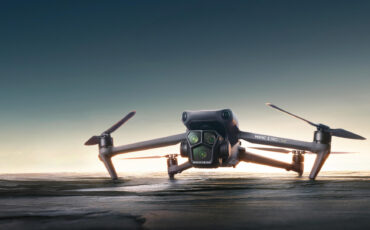
All Reviews
Latest reviews.

All Lab Tests
Latest lab tests.
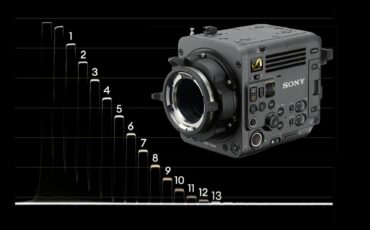
- Camera Database
- Lens Coverage Tool
- Lens Database
Newly Added

All Courses
Latest courses.

All Gear Guides
- Gear Guides by Budget
- Gear Guides by Type
- Recommended Kits
- Cameras of the Year
Latest Gear Guides
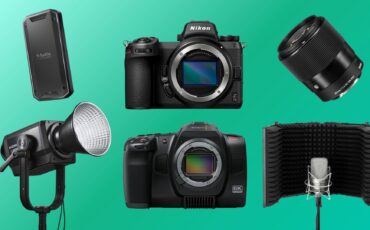
Latest How To

Latest Videos

All Podcast
Latest podcast.

All Spotlight
Latest spotlight.
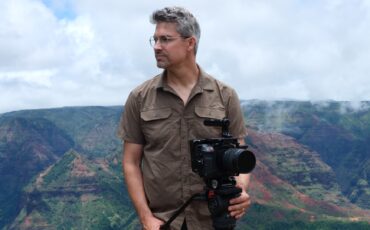
- CineD Channel
- Unbiased reviews – our principles
7 Useful Tips to Help You Make a Totally Awesome Travel Video

This is a guest post by Matti Haapoja. i n this article Matti shares some extremely useful guidelines and numerous tips on how to make a cinematic and awesome travel video with his Panasonic GH4.
Last fall I took a 29 day epic road trip through the west coast of America, along with my wife, brother and friends. Here are some most essential tips you should consider when planning to make an awesome travel film.
First off you have to make a plan. We had 29 days and although that seems like a lot of time we had to carefully plan out our trip in order to hit all the amazing places we wanted to see. Don’t be too strict because some places might totally surprise you with how amazing they are, case in point Crater Lake in Oregon. But make sure you have a plan so you don’t waste time on your trip trying to figure out where you should go.
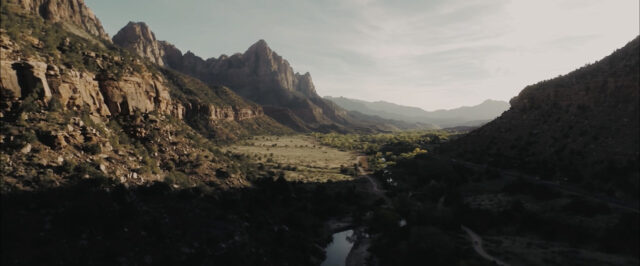
Then you need to figure out why you’re filming because that will dictate a lot of the gear you need and the quality you need to achieve. For this trip I tried to line up some sponsors who would either donate gear or pay for expenses and then in turn I would include them in the travel video somehow.
But in this case it was way too big of a hassle with not enough return so I decided to shoot just for fun. Personal projects like these can be a great way to showcase your talent and style which helps you in the future to get more jobs doing films you actually like doing and that fit your style of film making. “Wild” has already helped me to land other travel videos that I’m being paid for.
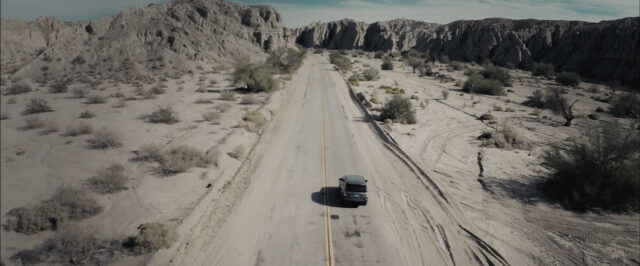
3. Travel light
If you have too much gear it’s going to either stop you from seeing the places you want or make you tired of shooting because its so much work. Keep it simple. I wanted to run really light so all I took with me was a Panasonic GH4 + Metabones adapter, a Sigma 18-35m f1.8, Nikon 85mm 1.8 and a panasonic 12-35 f2.8, Monopod and an ND filter. Remember if it’s your vacation try to relax and enjoy yourself.
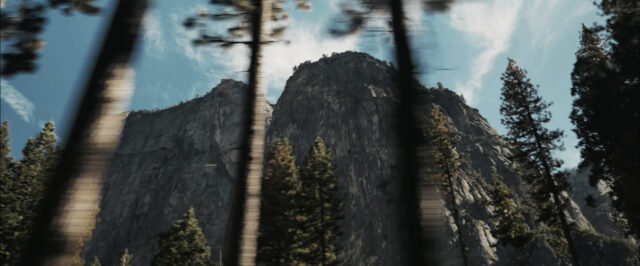
4. Don’t get robbed
Unfortunately fate would have it that apparently I had too much gear and in San Francisco my camera bag was stolen from our rental van. Be careful with your gear and don’t leave it in your car! Not even for 15 minutes… After a few days of sulking and being annoyed that footage from Crater Lake, Cannon Beach and Portland was stolen I got back into it and bought just the GH4, Panasonic 12-35mm 2.8 and an ND filter.
I realized that this was a perfect combo for traveling. Its insanely light and with the OS on the lens and using the EVF on the GH4 I shot everything handheld (except for a few shots at Crater lake which were stolen of course). I was able to walk around comfortably all day with the camera in hand and quickly snag shots almost like I was taking stills. I found it to be a great way to not be overwhelmed with gear and shooting. It also helped to be stealthy when shooting in cities.
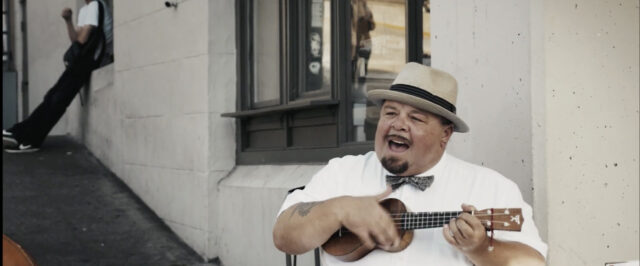
4. Don’t forget who you’re with
Its all about people, characters and stories in the end so don’t forget to capture the people you’re travelling with or the locals if you’re by yourself.
One of the big things to remember is that you don’t want to just capture the beautiful landscapes and places but try and capture people in those environments, their reactions, emotions and culture. Having characters interact with the environment will make your travel video much more interesting.
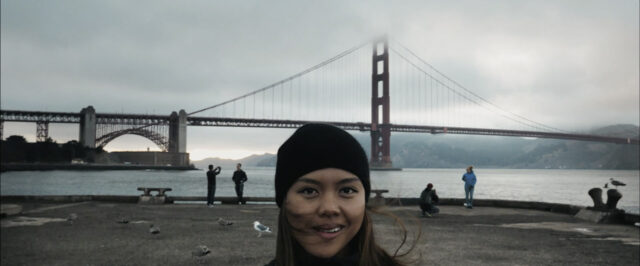
5. Make sure you have a drone
Okay I did have a drone with me also. I brought along a drone because I wanted some epic shots of all the epic landscapes we were going to. It really elevates the production value of a travel film. I went with the DJI Phantom 2 and GoPro setup (Hero 3 in this case). Be careful about where you fly your drone though because not all places allow it and the laws can be a bit tricky. Also keep in mind you need an ND filter, which I only found out later. Also a little sun hood for the GoPro will save you from the shadow streaks created by the propellers when flying towards the sun. More info on this HERE .
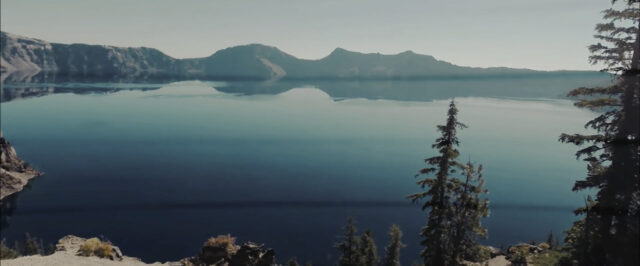
6. Take your time on the edit
So often with personal projects I don’t take as much time on it because there’s other projects to do that I’m being paid for or it’s just not a priority. But personal projects can take your film-making in the direction of films that you want to make. Clients will often ask you to recreate or make similar films to something you have already created, so a personal project can act as an awesome showcase video .
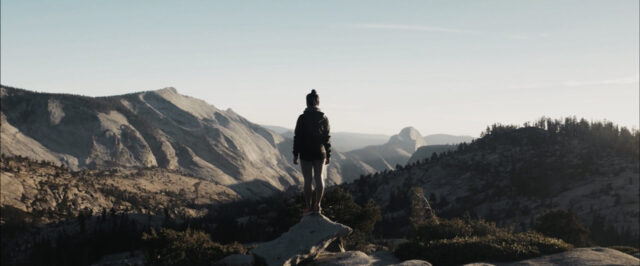
7. Shine, polish, match and grade!
Don’t rush the colour grade. Travel films are usually shot in tons of different locations with different lighting etc. To keep the video cohesive and consistent make sure you take lots of time on the grade and matching shots. In Wild I tried to take a lot of time matching shots especially between the GH4 and the GoPro footage. I used VisionColor’s Impulz LUT’s for this travel film which worked great because they offer different versions of each LUT for different cameras like the GH4 and GoPro. Then I used curves for contrast and Magic Bullet Colorista to match between shots.
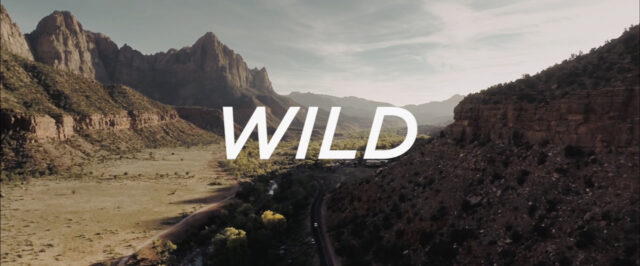
Remember that these are just some tips and not absolute rules. Do your best to be unique and true to your style!
You can see more of Matti Hapooja’s work at: www.heartvisuals.com vimeo.com/mattih
Support CineD. Shop with our affiliates B&H and CVP .
You may also like ....

17 Comments
- Most reacted comment
- Hottest comment thread
Most recent CineD Videos

WEEKLY CineD NEWSLETTER
Stay current with regular CineD updates about news, reviews, how-to’s and more.
You can unsubscribe at any time via an unsubscribe link included in every newsletter. For further details, see our Privacy Policy

Subscribe to our Newsletter
Want regular CineD updates about news, reviews, how-to’s and more? Sign up to our newsletter and we will give you just that.
You can unsubscribe at any time via an unsubscribe link included in every newsletter. The data provided and the newsletter opening statistics will be stored on a personal data basis until you unsubscribe. For further details, see our Privacy Policy

Sebastian Wöber
Sebastian Wöber is a director and DP, studied at Filmacademy Vienna and is passionate about harnessing the potential of filmmaking tech to create powerful cinematic work with limited resources. He is currently teaching film at Andrews University in the US.
- Terms of use
- Privacy Policy
Take part in the CineD community experience

How to Make a Travel Video: 15 Tips to Help PERFECTLY Capture Your Adventure
We’re teaching you how to make a travel video, including capturing quality footage, developing a comprehensive story, and creating an interesting edit.
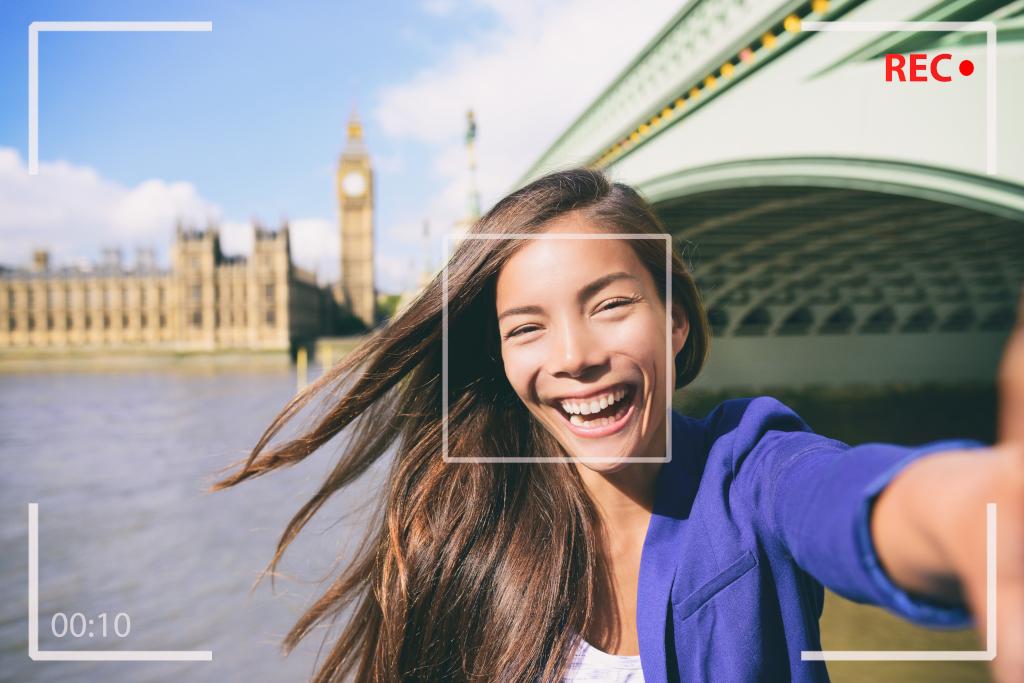
Making a great travel video is so much more involved than turning on your camera or iPhone and pushing record. Whether you are starting a YouTube channel or you are just making a memorial of your family vacation, you want the absolute best quality video footage to remember your trip by. In this guide, we are going to dive into how to make a travel video or vlog for beginners. We’ll focus on basic tips to create quality video footage, a comprehensive story, and an interesting edit.
Stop for Scavenger Hunts During Your Travels
Let’s Roam creates app-guided adventures for explorers in hundreds of cities around the world . These scavenger hunts , art walks, pub crawls , or ghost hunts combine competitive spirit with interesting trivia and photo ops. Each one offers a fantastic and unique experience! Find one in a nearby city , or download an Explorer Pass and try them all.
How to Make a Travel Video
1. pick your destination.
If you are making a travel video for personal memories, you likely already have a destination in mind. If you are making a professional video for YouTube, you may need to do some keyword research first and find a location that ranks highly in the SEO world. Using something like Google’s Keyword Planner can be very helpful for ideas.
2. Decide What Kind Of Video You Want To Make
There are several different types of travel videos that might interest you. The best way to figure out what type of video you want to make is to watch a lot of travel videos. Hop on Youtube or Vimeo and get to watching. Don’t just watch for entertainment value though, pay attention to things you like and don’t like. Do you like the videos with live narration or do you like voiceovers? Do you like YouTube videos with music and beautiful b-roll footage, or do you really like videos focused on information? There is no right or wrong answer, just preference.
Types of Videos to Consider
· Travel Vlogs – Vlogs or video blogging is a form of videography that is very personal. Generally, they are informal, based on reality, and require limited editing. They are often filmed in selfie-mode and have a friendly vibe. They rely on the audience trusting the vlogger and experiencing the destination through their eyes.
· Travel Guides – Travel guide videos focus more on what to do in a destination, for instance, “Top 10 Things To Do In Chicago.” They are focused on delivering information on the place, instead of personal information. These videos generally take more planning, require you to shoot much more footage, and take longer to edit. They can be highly SEO-driven though and produce a high number of views.
· Niche Videos – If you are making a family memoir, then this doesn’t apply so much to you, but if you are getting into professional video making, you need to find your niche. Do you want to focus on food, culture, or adventure? Think about your target audience and your passion! If you make videos about what you love, it will translate to your audience. They will feel your excitement and connect to your channel.
3. Write A Story
It is important to have a story in mind. You may film your whole trip and have great footage, but it can be really hard to put it together into something that makes sense. It is actually much easier to take some time before filming and figure out what your storyline is. This will help you decide what to film, what order to film in, and how to organize your video clips. If you are planning on posting your video professionally, keeping viewers’ attention is huge! You may have beautiful footage, but if people are bored with you, and your story is all over the place, you will lose them. Pulling people into an organized and interesting plot, keeps them hooked and coming back to see where you will take them next!
4. Decide What You Want To Film
Once you have a story in mind, begin to line out what exactly you want to film. This will naturally go along with your travel planning. What do you want to see? What are your interests in your target destination? Start with a general list of sights. Organize them into an itinerary that makes sense travel-wise. Then, begin to think about how you want to film them.
Again, go back to what others have done. While you don’t want to copy anyone else’s work (it’s always best to be creative and original), you can get great ideas from those who have gone before you. Think about angles, specific shots, pans, and what information you would like to present. Do you want to just have great footage and do a voiceover later? Do you want to present the information in vlog style, taking the viewer along as you go? Perhaps, you want each family member to have a part? Do you just want it to be natural and let what happens happen? Again, there is no wrong answer, only preferences.
We recommend making a list of exactly what video clips you want to get. It doesn’t have to be technical or use formal, filmmaking language, as long as you know what you mean. It can be scratched on a napkin or kept in a formal Google Spreadsheet, whatever fits your style! For instance, if you are filming the Eiffel Tower, you may make a list something like this:
- Slow pan up from bottom to top.
- Slow pan down from top to bottom
- Still view floating by from river cruise
- Panoramic pan from the top
- Long view from Champ-de-Mars
- Distant view The Trocadéro
- Zoom in from a distance
- Close-up still footage of twinkling lights at night
- Time-lapse at sunset as lights come on.
- Zoom out focusing on lights
5. Gather Your Equipment
The best equipment to use is the equipment you have! If you are making a family memoir or just starting out on YouTube, don’t worry too much about getting professional equipment to make travel videos. Actually, the learning curve is quite steep on some professional camera equipment, and you will find that your video quality is not as good as it is on your iPhone, GoPro, or point-and-shoot camera. So, don’t feel like you need to go spend a fortune on equipment. If you would like to snag a starter camera, the Canon PowerShot G7X Mark III is a great one. It has an articulating screen so you can keep an eye on what’s in your frame, a lightweight structure, and it takes great footage.
6. Use Multiple Cameras And Angles
One of the most important aspects of making a good travel video is making it visually stimulating. The same pan from left to right, the same eye level shots over and over, the same focal length throughout, makes for a visually boring video. Spice it up. Cinematic videos use footage from all different angles, above, below, the side, from the bottom up, etc! Get creative, if you don’t like it, you don’t have to use it! If you are planning on using the film for social media, then you need to consider what apps you will be using and film the scene in the correct orientation. For instance, you need a horizontal orientation for YouTube, but you are going to need a vertical orientation for your marketing on Instagram.
If you are traveling with family members or a partner, each of you carry a camera. This allows for multiple views, of the same subject, that you can splice together in editing software to create an interesting clip. Also, two creative brains are better than one. Your partner may see something in a different way than you do, and catching as many viewpoints as you can will help you create a video that many different kinds of people will enjoy watching.
Some cameras are better for specific footage. For instance, a DSLR camera is great for still footage, they are difficult to stabilize when moving heavily. GoPros are better for stabilization in active situations. Obviously, for aerial views, you need a drone. It may be easier to catch an unexpected moment on your phone. Use it all!
7. Keep It Steady
Video stabilization and sound are nemeses of travel videographers. They are the hardest two things to control. While most cameras and expensive lenses have internal stabilization, you will find that large cameras are still very hard to stabilize. If you are considering making YouTube your career, consider a gimbal for your camera. This will allow you to move and walk and talk, without shaky footage. Use a tripod or set up your camera on a steady surface when you want to do a monologue. Use a GoPro with stabilization when doing something active. When doing a pan, something as simple as holding your breath can make a huge difference. Most of all, when you turn on the camera, think about what you are shooting. Don’t just turn it on and slap record. Think about the composition. Think about your body stance. Get set, and then shoot.
8. Over Film Everything
You can never have too much footage. Film it, then film it again. You may think you got good footage, and then you get to editing and realize that it is overexposed, the sun is blocking out everything, or you didn’t allow it to focus well. You may find that you thought you were recording and you weren’t. All these things happen. So, we recommend filming the scene, rewatching it on your screen or phone, adjusting for mistakes, and then refilming it. You may have to film a certain thing multiple times. This isn’t always possible, but when it is, take the time to film it a few times. There is no such thing as too much footage.
9. The Camera Is Not As Fast As The Eye
Remember your camera is a machine. Depending on the quality of your camera, it can take time to focus. When you begin a vlog or monologue, give it 5-6 seconds to focus before your begin talking. When you are panning a landscape, go incredibly slow, as the camera is having to refocus multiple times on the way through to keep sharp. You can speed up the footage in your video editor. Make sure you give it time to focus.
10. Follow The Light
Lighting is of utmost importance in filmmaking. Before you begin filming, do a test. If you are vlogging, make sure your face isn’t under a shadow. Shooting into the sun will often produce starbursts in your footage. Low light footage often looks noisy. Sometimes just turning around the other direction, or turning on a lamp, will completely change your video quality.
If shooting in the middle of the day, your camera will tend to overexpose the footage. Remember that it is much easier to brighten something in post than it is to correct overexposure. Err on the underexposed side. You may need to manually adjust this on your DSLR or mirrorless camera when filming in direct sunlight.
11. Offer Some Information
We find that the best videos give us a behind-the-scenes take on your travel experiences. People want to know what they are looking at. Why is it important? Don’t overdo it. You don’t want to bore people but bring in some historical, cultural, or experiential information to keep the audience interested. If you are making a video for your own memoirs, this is how you are going to remember your trip, so include funny things that happen, how you feel in the moment, and what is going on behind the scenes. These are your memories, make them personal, and include the information that will help you remember the best parts of your trip.
12. Organize Your Footage
When shooting on several cameras, organization is key. You need a single place to bring together all your footage. We recommend investing in a good hard drive. Solid-state drives are more expensive, however, they are more sturdy for being thrown in and out of your travel backpack. We also recommend backing up your footage in multiple places.
Once you get all your footage in one place, begin to watch and label it. If you have 5 pan-ups of Mount Rushmore, label which one you think is the best. If you want to use a number system to grade the quality, that’s great too. Label your videos with descriptive names, letting you know what they are for future use. For instance, do not label your footage, “hot air balloons in Cappadocia.” Label it, “best left to right slow pan of blue balloon,” and put it in the “Cappadocia Hot Air Balloon Ride” folder. The more descriptive the better.
If filming an entire vacation or work trip, you will have footage from several different locations and sights. Break down your footage into appropriate folders. You want to be able to find it quickly! If you know what videos you are going to make for YouTube, separate the footage by video title, keeping all the footage for each video together. This may mean you have footage from several places in one folder.
If you are making a montage for personal use or you aren’t sure exactly what travel videos you are going to make yet, then separate them by location. We find that setting up multiple layers of folders and being as precise as possible takes a lot of time at the front end, but saves you time in the long run. Whatever system you decide to use, use it consistently.
13. The Magic Is In The Post
While getting good footage is obviously important, so is putting it together in a way that makes sense, flows smoothly, and provides visual and audio interest. There is no way we can cover all the ins and outs of editing in the scope of this article, but here are a few general concepts to think about.
14. What Editor Should You Use?
What video editor you use depends on a lot of things, like what equipment did you film on? If you filmed on your phone, and you only have your phone, then you are going to use a video editing app like InShot . If you are filming primarily on an iPhone, then you may want to use iMovie.
Using multiple cameras to produce a full-length travel video or vlog for YouTube or Vimeo, requires true video editing software. Which one you choose, depends on your equipment and your editing style. Many PC users like Adobe Premiere Pro. Those who really want control over every detail of sound and color grading may like Davinci Resolve . Adobe is quite expensive, prone to crashing and freezing, and export issues. We wouldn’t recommend it or any expensive software for beginners.
Adobe does make a web-based video editor called Premiere Rush that is free and has a medium level of control, allowing you to splice video, color grade, and improve the sound. It has premade graphics and allows for adding text and video transitions. It’s a great editor for beginners! Davinci is not as user-friendly, but it does offer incredible control and is free. Mac users tend to use Final Cut , which again might be too expensive if you are just starting out or making videos for fun.
· Add Music
Music can make or break your video. Take some time to find music that fits the emotion of your footage. Find something upbeat for your intro. Make sure that music used when speaking is turned down and doesn’t have too many lyrics or crazy beats that make it hard to understand your words. You want your music to add emotion and interest to your video, not distract the viewer. It should be present, but not overpowering.
If you are posting your video anywhere on social media, you must make sure that you use only royalty-free music. There are paid platforms like Epidemic Sound , Bensounds , or Soundstripe that most YouTube professionals use. Good royalty-free music is generally not free to use. However, most of these subscriptions do have a free trial period.
· Go Easy On The Transitions
Creative video transitions can add to the visual interest of your video. However, you are not making a Powerpoint presentation, so use transitions, especially premade ones, sparingly. Instead, think about transitions when you are filming and use a camera drop, hand to the camera, or spin to transition from one clip to another. Be creative and think it out beforehand.
· Pay Attention To Consistency
When making a travel video, remember that the goal is to create a story. As much as possible, the viewer should not be able to tell when you switch cameras. Part of great editing is to adjust your color and sound to be consistent throughout the video. It takes some practice and a lot of time. So, be patient with it. It’s good advice to take it slow. When necessary, step away for a while and come back and look at it with fresh eyes. Your software will likely need to catch up anyway.
15. Be True To You
If we can offer one piece of advice, especially for those entering the YouTube world, it would be to stay true to yourself. Not only will it make you more successful, as you will attract true fans that want to engage and invest in your channel, but you will be happier with your content. There is nothing worse than watching a video you made 6 months ago and being embarrassed about how fake it feels. You should identify with your own creations. Make it beautiful. Tell a good story, but above all, make sure it is true to who you are!
Closing Thoughts
While this guide is nowhere near comprehensive, we hope it gives you a good foundation to start. Video making is an art, and it takes time to learn. Just like any art form, you need to practice. It will take trial and error. It will involve experimenting and failures, but that is half the fun!
What are your favorite videography tips? Let us know in the comments!
Want to get ahead of the game on filming new destinations? Check out our list of “ Emerging Travel Destinations”, and get there first!
Does your new adventure include traveling with a partner? Check out our guide on “ How to Travel As A Couple: Tips For An Amazing Adventure. “
Frequently Asked Questions
Making a great travel video starts with capturing fantastic footage. Composition, lighting, and stabilization are things to think about. Include info like travel tips and historical facts to add interest!
These 15 tips for producing travel videos will help you ensure that you capture your adventure in a fun and professional way
Picking what to shoot is an important part of making a travel video . Consider doing a tour or a city scavenger hunt of your destination. This will allow you to get a glimpse of the local attractions.
Featured Products & Activities
Make Your Next Travel Video Shine With These Five Editing Tips
Creating cinematic travel videos can be a rewarding way to share your experience of visiting a new place. Once you've returned from your trip and have all your footage loaded into the video editor, here are five tips to help create your best work.
In this video, Jordy Vandeput for Cinecom.net shares a few of his secrets he learned that helped him create his newest travel video, " NICELAND ." One challenge that travel videos face is that the viewer wasn't there, so it's up to the editor to piece footage together in a way that conveys the emotion, which is usually excitement, fascination, and curiosity.
To create emotion, it's important to submerse the viewer in the video, and a major part of this is through sound design. Any memorable travel video I've seen has had the sound design carefully crafted. Vandeput shows you how he did it with "NICELAND" here, and I would put it on the top of your list of what to take away from this.
Check out the full video above for all of his editing tips to use on your next cinematic travel video. Do you have anything else to add onto the list? Let us know your tips in the comments.
Ryan Mense is a wildlife cameraperson specializing in birds. Alongside gear reviews and news, Ryan heads selection for the Fstoppers Photo of the Day.

Tips to travel to Mexico on a budget
"gma" teams up with the experts at the points guys for insider tips on taking a dream trip to cancun, mexico, without breaking the bank., may 31, 2024, what’s next for russia, what comes next after texas school shooting, what's next for abortion rights in america, the new battle for voting rights, how we can build a clean and renewable future, the fight for kyiv, examining extremism in the military, gun violence: an american epidemic, border crisis: what’s happening at the us-mexico border, remembering george floyd: a year of protest, the source of covid-19: what we know, how did the gamestop stock spike on wall street happen, why are people hesitant to trust a covid-19 vaccine, how climate change and forest management make wildfires harder to contain, disparity in police response: black lives matter protests and capitol riot, 2020 in review: a year unlike any other, examined: how putin keeps power, why don’t the electoral college and popular vote always match up, us crosses 250,000 coronavirus deaths, 2nd impeachment trial: what this could mean for trump, presidential transition of power: examined, how donald trump spent his last days as president, how joe biden's inauguration will be different from previous years, belarus’ ongoing protests: examined, trump challenges the vote and takes legal action, 2020’s dnc and rnc are different than any before, what is happening with the usps, voting in 2020 during covid-19, disinformation in 2020, abc news specials on, impact x nightline: on the brink, impact x nightline: unboxing shein, the lady bird diaries, impact x nightline: it's britney, impact x nightline: natalee holloway -- a killer confesses, impact x nightline: who shot tupac, impact x nightline, power trip: those who seek power and those who chase them, the murders before the marathon, the ivana trump story: the first wife, mormon no more, leave no trace: a hidden history of the boy scouts, keeper of the ashes: the oklahoma girl scout murders, the orphans of covid: america's hidden toll, superstar: patrick swayze, the kardashians -- an abc news special, 24 months that changed the world, have you seen this man.

COMMENTS
Unlock the magic of cinematic travel videography with our guide. Craft stunning travel videos that transport viewers to captivating destinations.
Want to create an engaging travel video? Learn from the best with these 10 practical tips for making great travel videos.
Do you want to create breathtaking videos and eventually make a living doing so? Check out my free ebook: "5 Steps to Becoming a Pro Video Creator": https://...
Join our Award Winning Online Film Academy with over 1,000+ video lessons and over 100+ hours of content for only $97!!https://www.tomorrowsfilmmakers.com/97...
With your trip just ahead, it's time to learn how to make a travel video with any camera. These are my top 10 tips to making a cinematic and engaging travel ...
A complete guide on how to shoot and edit cinematic travel videos. Read this article before you pick your camera up and start the journey.
When it comes to creating cinematic travel videos, camera techniques play a crucial role in capturing stunning footage that transports the viewer to a different world. Even basic camera techniques, when executed well, can drastically improve the overall quality of your videos. One of the most important parts about filming video as opposed to stills is how you manipulate the camera's settings ...
Creating cinematic travel videos is an art form that requires a combination of technical skills and creativity. Travel videos are a fantastic way to capture the essence of a destination and share your experiences with others. Whether you are a professional filmmaker or a casual traveler looking to document your adventures, the tips, and techniques for creating cinematic travel videos can help ...
Love to make travel videos? Here is your ultimate guide to cinematic travel videos. Learn how to capture nature.
Capturing travel adventures is important to most people, but even more so to us photographers and videographers. Here are seven tips to make sure you come back with the best footage possible ...
We will take you through everything you need to know about creating travel videos in addition with best travel video ideas you can get started with.
50 Amazing Travel Video Ideas and Tips - Capture Your Adventure in Cinematic Style!
Learn to make better videos! Start with my Creator Crash Course: https://geni.us/jYKNBECOME A VIDEO CREATOR WITH MY COURSES:→ Start with my Creator Crash Cou...
Making cinematic and exciting travel videos requires a mix of inspiration, technical skills, and openness to new experiences. By following the tips mentioned above, you can create travel videos that preserve your memories and tell an accurate and captivating story of your journey.
In this article Matti shares some extremely useful guidelines and tips on how to make a cinematic and awesome travel video.
The best part? A lot of these filmmaking tips can be applied to mirrorless and cinema cameras, as well as smartphone cameras! That's right. Even if you're using your iPhone to create travel content, you can start creating cinematic masterpieces today. Ready to get started? Here are 5 tips for creating cinematic travel videos:
A few months back, our community pal Mark published an awesome list of tips for traveling with camera gear. We thought we'd unpack that a little more (pun absolutely intended), and connect with some of Vimeo's top travel peeps about all-things video wanderlusting — from pre-production, to gear, to best practices and beyond. But who are these insightful humans offering us advice? Amazing ...
How to Make Exciting Travel Videos: Travel Filmmaking for Beginners Are you interested in being able to film your vacation in a fun and engaging way? Do you wis. ..
COLOR GRADED WITH MY PRESETS! - https://goo.gl/46Ud1jFREE TRIAL OF THE BEST MUSIC FOR YOUTUBE - https://goo.gl/cXriYVNEW MERCH - https://goo.gl/oZbZMjCOURSE...
We're teaching you how to make a travel video, including capturing quality footage, developing a comprehensive story, and creating an interesting edit.
Creating cinematic travel videos can be a rewarding way to share your experience of visiting a new place. Once you've returned from your trip and have all your footage loaded into the video editor ...
http://storyblocks.com/Cinecom - Learn how to film an amazing cinematic travel video with these 5 tips. I've been to Iceland recently and shot my own travel ...
"GMA" teams up with the experts at The Points Guys for insider tips on taking a dream trip to Cancun, Mexico, without breaking the bank.
Planning to shoot a travel video? These 5 tips will help any filmmaker or videographer shoot videos quicker and more efficiently. Try these techniques when y...